- இந்திய விழாக்கள், பண்டிகைகள்
- நடிகர்கள், நடிகைகள்
- ஆன்மீக தலைவர்கள்
- இசையமைப்பாளர்கள்
- எழுத்தாளர்கள்
- சமூக சீர்திருத்தவாதிகள்
- சமூக சேவகர்கள்
- சுதந்திர போராட்ட வீரர்கள்
- தொழிலதிபர்கள்
- நாட்டிய கலைஞர்கள்
- விஞ்ஞானிகள்
- விளையாட்டு வீரர்கள்

Search on ItsTamil
மகாத்மா காந்தி.
‘மகாத்மா காந்தி’ என்று அன்புடன் அழைக்கப்படும் “மோகன்தாஸ் கரம்சந்த் காந்தி” இந்திய விடுதலைப் போராட்டத்தைத் தலைமையேற்று நடத்திய மாபெரும் சுதந்திரப் போராட்ட வீரர் ஆவார். ‘சத்தியாகிரகம்’ என்றழைக்கப்பட்ட இவரது அறவழி போராட்டம் இந்திய மக்களிடையே விழிப்புணர்வை ஏற்படுத்தியது மட்டுமல்லாமல், இந்திய நாடு விடுதலைப் பெறவும் முக்கியக் காரணமாகவும் அமைந்தது. இதனால், இவர் “விடுதலைப் பெற்ற இந்தியாவின் தந்தை” என இந்திய மக்களால் போற்றப்பட்டார். “அகிம்சை” என்னும் வன்முறையற்ற மாபெரும் மந்திரத்தை உலகத்திற்கு வித்திட்ட உன்னத மனிதர். இந்தியாவின் விடுதலைக்காக ஆங்கிலேயரை எதிர்த்து அறவழியில் போராட்டம் நடத்தி, விடுதலைக்குக் காரணமாக இருந்ததால், இவருடைய தியாகத்தை நினைவுகூறும் வகையில் ஒவ்வொரு வருடமும் இவருடைய பிறந்தநாளான அக்டோபர் 02 ஆம் தேதியை “காந்தி ஜெயந்தியாக” உலகம் முழுவதும் கொண்டாடுகிறோம். தன்னுடைய வாழ்நாள் முழுவதையும் பாரத நாட்டிற்காகவே அர்பணித்த மாபெரும் மனிதர் மகாத்மா காந்தியின் வாழ்க்கை வரலாறு மற்றும் தியாகங்களை விரிவாகக் காண்போம்.
பிறப்பு: அக்டோபர் 02, 1869
இடம்: போர்பந்தர், குஜராத் மாநிலம், இந்தியா
பணி: இந்திய விடுதலைப் போராட்ட வீரர், அரசியல் தலைவர்
இறப்பு: ஜனவரி 30, 1948
நாட்டுரிமை: இந்தியன்
மோகன்தாஸ் கரம்சந்த் காந்தி அவர்கள், 1869 ஆம் ஆண்டு அக்டோபர் மாதம் 02 ஆம் நாள், இந்தியாவின் குஜராத் மாநிலத்திலுள்ள “போர்பந்தர்” என்ற இடத்தில் கரம்சாந்த் காந்திக்கும், புத்திலிபாய்க்கும் மகனாகப் பிறந்தார். இவருடைய தாய்மொழி குஜராத்தி ஆகும். மேலும் அவருடைய தந்தை கரம்சாந்த் காந்தி, போர்பந்தரில் ஒரு திவானாக பணியாற்றி வந்தார்.
ஆரம்ப வாழ்க்கை மற்றும் கல்வி
மோகன்தாஸ் கரம்சந்த் காந்தி அவர்கள், பள்ளியில் படிக்கும்போதே நேர்மையான மாணவனாக விளங்கினார். தன்னுடைய 13 ஆம் வயதிலேயே கஸ்தூரிபாயை திருமணம் செய்துகொண்ட மோகன்தாஸ் கரம்சந்த் காந்தி அவர்கள், பதினெட்டு வயதில் ‘பாரிஸ்டர்’ எனப்படும் வழக்கறிஞர் கல்விக்காக இங்கிலாந்து சென்றார். தன்னுடைய வழக்கறிஞர் கல்வியை வெற்றிகரமாக முடித்து, பாரதம் திரும்பிய காந்தி பம்பாயில் சிறிது காலம் வழக்கறிஞராகப் பணியாற்றினார்.
இந்திய விடுதலைப் போராட்டதில் ஈடுபடக் காரணம்
பம்பாய் மற்றும் ராஜ்கோட்டில் சிறிதுகாலம் பணியாற்றிய மகாத்மா காந்தி அவர்கள், 1893 ஆம் ஆண்டு ஒரு இந்திய நிறுவனத்தின் உதவியால் தென் ஆப்பிரிக்காவில் பணிபுரிய பயணம் ஆனார். அன்றுவரை அரசியல் ஈடுபாடின்றி இருந்த காந்தியின் மனதில் அந்தப் பயணம் அவருக்குப் பெரும் தாக்கத்தை ஏற்படுத்தியதோடு மட்டுமல்லாமல், பின்னாளில் அவரை ஒரு மாபெரும் அரசியல் சக்தியாகவும் மாற்றியது. குறிப்பாக தென்னாப்பிரிக்காவின் டர்பன் நகரிலுள்ள நீதிமன்றத்தில் தலைப்பாகை அணிந்து வாதாடக்கூடாது எனப் புறக்கணிக்கப்பட்ட நிகழ்வும், ஒரு நாள் பிரிட்டோரியா செல்வதற்காக, இரயிலில் முதல் வகுப்பில் பயணம் செய்தபோது, ‘வெள்ளையர் இல்லை’ என்ற காரணத்தால் பயணம் செய்ய மறுக்கப்பட்ட நிகழ்வும், அவருடைய மனதில் பெரும் மாற்றத்தை ஏற்படுத்தியது. அதுமட்டுமல்லாமல், தென்னாப்ப்ரிக்காவில் கறுப்பின மக்கள் படும் இன்னலுக்கும், அங்கு குடியேறிய இந்திய மக்களுக்கும் ஒரு விழிப்புணர்வை ஏற்படுத்தி, 1894 ஆம் ஆண்டு இந்திய காங்கிரஸ் என்ற கட்சியினை தொடங்கி, அதற்கு அவரே பொறுப்பாளரானார். பிறகு 1906 ஆம் ஆண்டு ஜோகர்ன்ஸ்பர்க் என்ற இடத்தில், அகிம்சை வழியில் நடைபெற்ற போராட்டத்தில் கலந்துகொண்டு, கைது செய்யப்பட்டு பலமுறை சிறை சென்றார். இவ்வாறு அகிம்சை வழியில் தென்னாப்பிரிக்காவில் வாழும் இந்திய மக்களின் பிரச்சனையில் வெற்றிக் கண்ட மகாத்மா காந்தி, இந்தியா திரும்பியதும், கோபாலகிருஷ்ண கோகலே மற்றும் ரவீந்திரநாத் தாகூர் போன்ற பெரும் அரசியல் தலைவர்களின் நட்பு ஏற்பட காரணமாக அமைந்தது.
இந்திய விடுதலைப் போராட்டதில் காந்தியின் பங்கு
இந்திய விடுதலை இயக்கத்தை முன்னெடுத்துச் செல்ல 1885 ஆம் ஆண்டு தொடங்கப்பட்ட இந்திய தேசிய காங்கிரசில் இணைந்தார். ஆங்கிலேயருக்கு எதிரான விடுதலைப் போராட்டத்தில் திவீரமாகத் தன்னை ஈடுபடுத்திக் கொண்ட மோகன்தாஸ் கரம்சந்த் காந்தி அவர்கள், 1921 ஆம் ஆண்டு இந்திய தேசிய காங்கிரசின் தலைவராகவும் தேர்தெடுக்கப்பட்டார். ரவ்லத் சட்டம் மற்றும் ஜாலியன் வாலாபாக் படுகொலைக்கு குரல்கொடுக்கவும், 1919 இந்திய அரசு சட்டத்தில் இந்தியருக்கு வழங்கப்பட்டிருந்த குறைவான அதிகாரங்களை ஏற்க மறுத்தலை வெளிக்காட்டவும், காந்தி ஒத்துழையாமையை இயக்கத்தினை 1922 ஆம் ஆண்டு தொடங்கினார். மாணவர்கள் கல்லூரிக்குச் செல்லாமல் இருப்பது, வழக்கறிஞர்கள் நீதி மன்றத்திற்கு செல்லாமல் இருப்பது, பிரிட்டிஷ்காரர்கள் தயாரிக்கப்பட்ட துணி மற்றும் பொருட்களை புறக்கணித்தல் என பெரும் தாக்கத்தை இந்தியா முழுவதும் ஏற்படுத்தியது. இளையத் தலைமுறை மற்றும் தேசியவாதிகளிடையே இந்த இயக்கம் பெரும் ஆதரவைப் பெற்றது மட்டுமல்லாமல், ஒத்துழையாமை இயக்கத்தின் வெற்றியால், காந்தி இந்திய தேசிய காங்கிரஸின் தனிப்பெரும் தலைவராக உருவெடுத்தார். பின்னர் 1922 ல் உத்திரபிரதேசத்தில் சௌரி சௌரா என்ற இடத்தில் நடந்த நிகழ்வினால் இவ்வியக்கம் கைவிடப்பட்டது.
காந்தியின் தண்டி யாத்திரை
1930 ஆம் ஆண்டு பிரிட்டிஷ் அரசு உப்புக்கு வரி விதித்தது. ஆனால், இதனை ஏற்க மறுத்த காந்தியடிகள், ‘தன்னுடைய நாட்டில் விளைந்த பொருளுக்கு அன்னியர் வரி விதிப்பதா?’ எனக் கருதி, சத்தியாகிர முறையில் இதை எதிர்க்க முடிவு செய்து, 1930 மார்ச் 02 தேதி அகமதாபாத்திலிருந்து சுமார் 240 மைல் தூரத்தில் இருந்த தண்டியை நோக்கி நடைபயணம் மேற்கொண்டார். இறுதியில் 23 நாள் பயணத்திற்குப் பிறகு தண்டியை வந்தடைந்த அவர், அங்கிருந்த கடல் நீரில் உப்பு காய்ச்சி ஆங்கில சட்டத்திற்கு எதிராக அதை விநியோகித்தார். இந்த நிகழ்வு இந்தியாவில் பல இடங்களில் பரவியது மட்டுமல்லாமல், போராட்டம் தீவிரம் அடைந்து காந்தி உட்பட பல்லாயிரக்கணக்கான இந்தியர்கள் கைது செய்யப்பட்டு சிறையில் அடைக்கப்பட்டனர். ஆனால், போராட்டம் தீவிரம் அடைவதைக் கண்ட ஆங்கில அரசு, வேறு வழியில்லாமல் காந்தியுடன் பேச்சுவார்த்தை நடத்தி, அவர்கள் விதித்த உப்புவரியை திரும்பப் பெற்று கொண்டனர். ‘உப்பு சத்தியாகிரகம்’ என்ற இந்நிகழ்வு இந்திய விடுதலைப் போராட்ட வரலாற்றில் ஒரு திருப்புமுனையாக அமைந்தது என கூறலாம்.
வெள்ளையனே வெளியேறு இயக்கம்
1942 ஆம் ஆண்டு ஆகஸ்ட் 8 ஆம் தேதி ஆங்கில அரசுக்கு எதிராக ‘ஆகஸ்ட் புரட்சி’ என அழைக்கப்படும் ‘வெள்ளையனே வெளியேறு’ இயக்கத்தினை காந்தி தொடங்கி வைத்தார். காந்தியின் மன உறுதியையும், அகிம்சை பலத்தையும் கண்ட ஆங்கில அரசு திகைத்தது. இறுதியில் காந்தியின் இடைவிடாத போராட்டத்தால், 1947 ஆம் ஆண்டு ஆகஸ்ட் 15 ஆம் நாள் இந்திய சுதந்திரப் பிரகடனம் அரங்கேறியது. ஆனால், இந்திய – பாகிஸ்தான் பிரிவினை காந்தியை பெரிதும் பாதித்தது.
அகிம்சை என்னும் வார்த்தைக்கு அர்த்தம் சொன்ன மகாத்மா காந்தி அவர்கள், 1948 ஆம் ஆண்டு ஜனவரி 30 ஆம் நாள் (அதாவது இந்தியா சுதந்திரம் அடைந்த அடுத்த ஆண்டே) புது தில்லியில் நாதுராம் கோட்சே என்னும் கொடியவனால் சுட்டுக்கொல்லப்பட்டார்.
ஆங்கில ஆட்சிக்கு எதிராகவும், இந்திய விடுதலைக்காகவும் அந்நியப் பொருட்கள் புறக்கணிப்பு, உப்பு சத்தியாகிரகம், வரி கொடா இயக்கம், ஒத்துழையாமை இயக்கம், வெள்ளையனே வெளியேறு இயக்கம் என பலப் போராட்டங்களை அறவழியில் முன்னெடுத்து நடத்தி, துப்பாக்கி ஏந்தி தன்னுடைய முரட்டுக்கரங்களால் அடக்கி ஒடுக்கிய வெள்ளையர்களை திகைக்கச் செய்தவர். பாரத நாட்டிற்காக தன்னுடைய உயிரையும் காணிக்கையாக்கிய மகாத்மாவின் வாழ்க்கை வரலாறு மற்றும் போராட்டங்கள் உலக சரித்திரத்தில் எழுதப்பட்ட அழியா சுவடுகள் ஆகும்.
Recent Posts
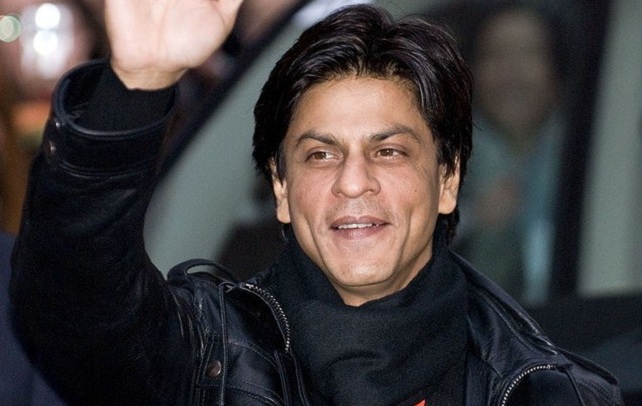
ஹரிவன்ஷ் ராய் பச்சன்
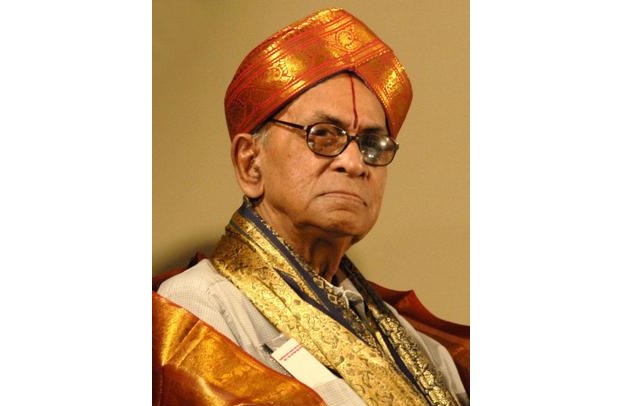
பி. பி. ஸ்ரீனிவாஸ்
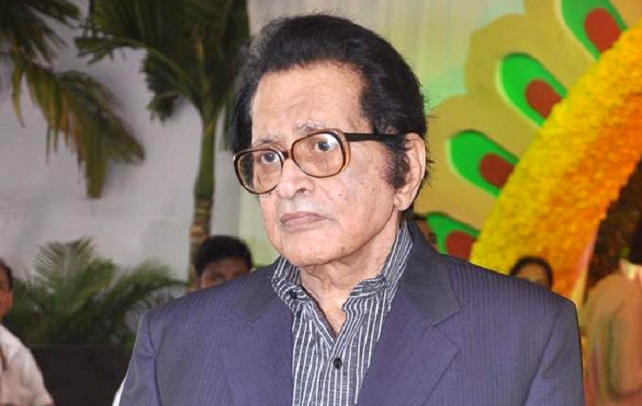
மனோஜ் குமார்

திருபாய் அம்பானி
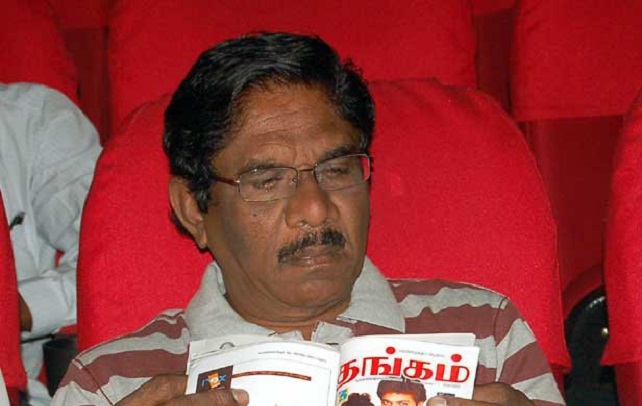
Related Posts
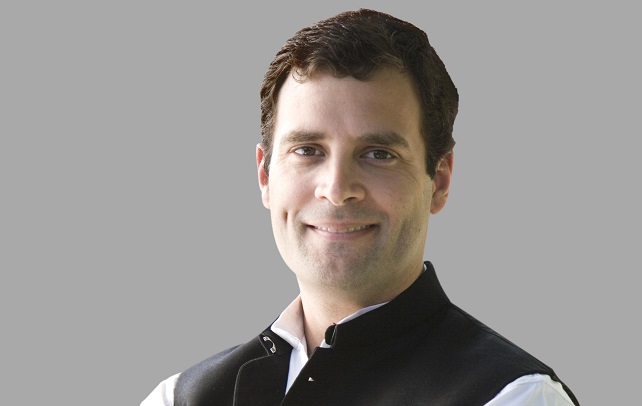
ராகுல் காந்தி
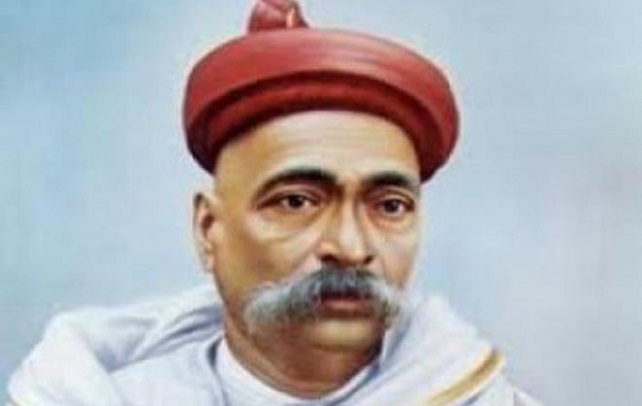
பால கங்காதர திலகர்
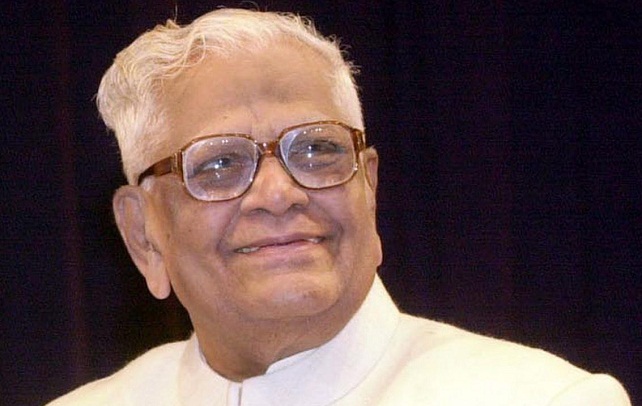
ஆர். வெங்கட்ராமன்
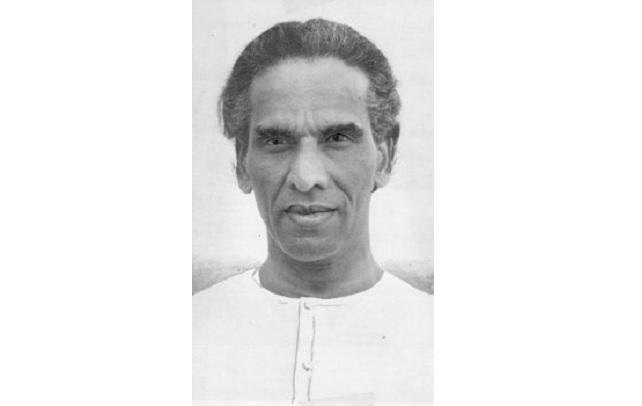
வி. கே. கிருஷ்ண மேனன்
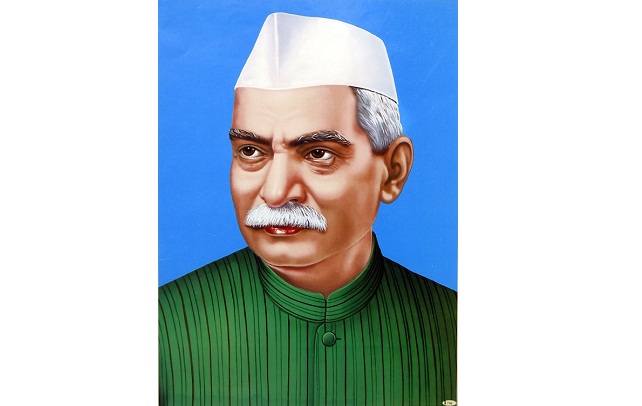
டாக்டர். ராஜேந்திர பிரசாத்
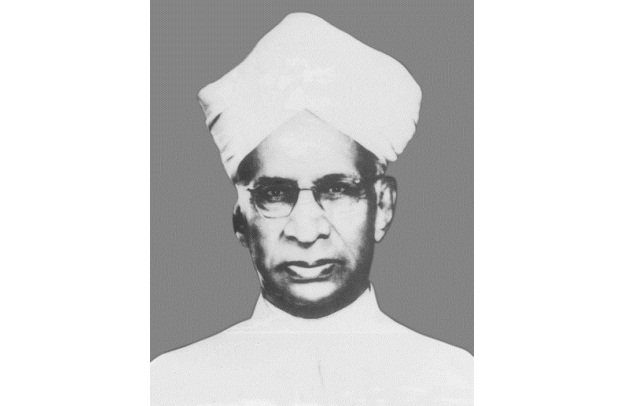
சர்வபள்ளி ராதாகிருஷ்ணன்
Very Useful
my grand father gandhi.i love “INDIA”.
Super talented person
i love gandhiji. he is one of the best man in india.
In this composition i know about mahatma Gandhi in Tamil and thank you very much for adding the same and hats of to you guys thank you
i like the first passage in this Tamil composition
I like his brave and he dedicated his life for people. He gave freedom to other people.
Salute Big leader of India
- இன்றைய ராசி பலன்
- வார பலன் | Vara rasi palangal
- மாத பலன் | Matha rasi palan
- குரு பெயர்ச்சி பலன்கள்
- சனி பெயர்ச்சி பலன்கள்
- ராகு கேது பெயர்ச்சி
- ஆன்மிக தகவல்கள் | Aanmeega Thagaval
- தமிழ் கதைகள் | Tamil stories for reading
- சுவாரஸ்ய தகவல்கள்
- கடவுளின் அற்புதங்கள்
- சமையல் குறிப்புகள்

மகாத்மா காந்தி வாழ்க்கை வரலாறு
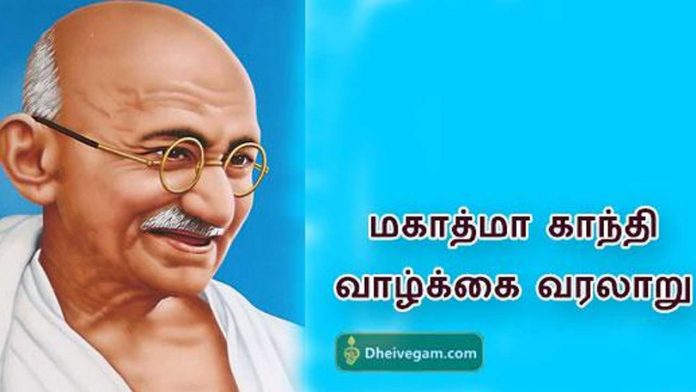
நம்மை எதிர்ப்பவர்களை சண்டையிட்டு வெல்லாமல் அகிம்சையின் மூலமும் வெல்லலாம் என்பதனை நிரூபித்து காட்டியவர் தான் நாம் இன்று அன்போடு “ மகாத்மா ” என்று அழைக்கப்படும் காந்தி அடிகள் . அவரது போராட்டக்குணம் நாம் அனைவரும் பின்பற்ற வேண்டிய வியக்கத்தக்க ஒன்று. இந்தியா சுதந்திரம் அடைய ஒரு முக்கிய காரணமாக அமைந்த இந்த காந்தியடிகளின் வாழ்க்கை தொகுப்பினை தான் நாம் இந்த பதிவில் காண உள்ளோம். காந்திஅடிகளின் வாழ்க்கை பற்றிய முழுமையான விவரங்களை தெரிந்து கொள்ள இந்த பதிவினை தொடர்ந்து படியுங்கள்.
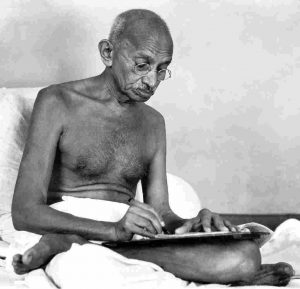
காந்தி பிறப்பு:
காந்தி குஜராத் மாநிலத்தில் உள்ள “போர்பந்தர்” என்னும் இடத்தில் 1869ஆம் ஆண்டு அக்டோபர் 2ஆம் நாள் கரம்சந்த் காந்தி மற்றும் புத்திலிபாய் என்கிற தம்பதிக்கு மகனாக பிறந்தார். அவரது இயற்பெயர் “மோகன்தாஸ் கரம்சந்த் காந்தி” இந்த பெயரே பின்னாளில் மருவி காந்தி என்றானது. இன்று நம் அனைவராலும் “தேசத்தந்தை” என்று அழைக்கப்படுகிறார்.
இயற்பெயர் – மோகன்தாஸ் கரம்சந்த் காந்தி பெற்றோர் – கரம்சந்த் காந்தி மற்றும் புத்திலிபாய் பிறந்த தேதி மற்றும் ஆண்டு – அக்டோபர் 2 1869 சொந்த ஊர் – போர்பந்தர் [குஜராத் மாநிலம்]
காந்தி அடிகளின் சிறப்பு பெயர்கள் :
நாடு போற்றும் நற்பணிகளையும் எண்ணிலடங்கா தியாகங்களை செய்தவருமான காந்தி அடிகளுக்கு சில சிறப்பு பெயரும் உண்டு. அதனை கீழே தொகுத்துள்ளோம்.
தேசத்தந்தை – மக்களால் வழங்கப்பட்டது
மகாத்மா – ரவீந்திரநாத் தாகூரால் வழங்கப்பட்டது
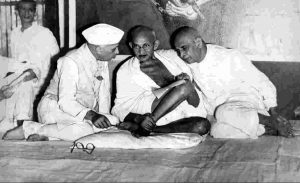
காந்தி கல்வி மற்றும் திருமணம் :
காந்தி அடிகள் தனது பள்ளி படிப்பில் திறமையான மாணவராகவே விளங்கினார். மேலும் அவர் தனது 18ஆவது வயதில் வழக்கறிஞர் ஆக வேண்டும் என்ற எண்ணத்தில் இங்கிலாந்து சென்று தனது பட்டப்படிப்பினை மேற்கொண்டார். பிறகு இங்கிலாந்தில் பட்டம் பெற்ற காந்தி இந்திய திரும்பினார்.
அதனை தொடர்ந்து மும்பையில் சில காலம் வழக்கறிஞராக பணியாற்றினார். காந்தி அவர்கள் பள்ளி பருவத்திலேயே தனது 13ஆம் வயதிலேயே கஸ்தூரிபாய் என்பவரை மணந்து கொண்டார். இதனை அடுத்து அவர்களுக்கு நான்கு குழந்தைகள் பிறந்தன.
காந்தியின் மனைவி – கஸ்தூரி பாய்
தென்னாபிரிக்க மண்ணில் சத்தியாகிரகம் :
மும்பை மற்றும் ராஜ்கோட்டில் சிறிது காலம் பணியாற்றிய அவர் தனது நண்பர் ஒருவரின் மூலம் தென்னாப்பிரிக்காவில் வழக்கறிஞர் வேலைக்காக சென்றார். அப்போது ஒருமுறை அவர் நீதிமன்றத்தில் வாதாட தலைப்பாகையோடு சென்றார். அங்கிருந்த நீதிபதி அவரை தலைப்பாகை அணிந்திருந்த காரணத்தினால் வாதாட அனுமதிக்கவில்லை. இதனை தொடர்ந்து அவர் அந்த நீதிமன்றத்தில் இருந்து வெளியேறினார்.
மேலும் ஒரு முறை ரயிலில் பயணிக்கும் போது முதல் வகுப்பில் டிக்கெட் எடுத்து ரயிலில் ஏறினார். ஆனால், அங்கிருந்த அதிகாரி அவரை அந்த முதல் வகுப்பில் பயணிக்க அனுமதிக்கவில்லை. காரணம், அவர் வெள்ளைக்காரர் இல்லை என்பதால் அவரை பயணிக்க அனுமதிக்கவில்லை.
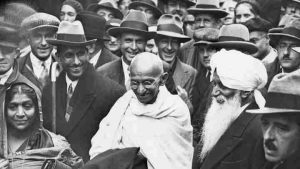
இதனால் தொடர்ந்து அவமானத்தினை சந்தித்த காந்தி அங்குள்ள மக்களின் அதாவது கறுப்பின மக்கள் மற்றும் தென்னாப்பிரிக்காவில் வாழும் இந்தியர்களின் நிலைமையினை நினைத்து வருந்தினார். இது போன்ற நிகழ்வுகளே காந்திக்கு அரசியலில் ஈடுபாடு வரக்காரணமாக அமைந்தது.
பிறகு முதல் முறையாக ஜோகனஸ்பர்க் நகரில் மக்களின் குரலாக அவர் அகிம்சை முறையில் சத்தியாகிரகத்தினை வெற்றிகரமாக நடத்தினார். அப்போதிலிருந்து அகிம்சை வழியில் போராடுவதை தனது யுக்தியாக கையாண்டார் காந்தி.
கதர் உடையின் பின்னணி :
தென்னாப்பிரிக்காவில் இருந்து நாடு திரும்பிய காந்தி இந்தியாவில் ஆங்கிலேயர்களின் ஆதிக்கத்தினை கண்டும் மனம் நொந்தார். எனவே அவர் தொடர்ந்து பல இடங்களில் குரல் கொடுத்தார். மக்கள் அன்னைவரையும் ஒன்றுதிரட்டி அவர்களுக்கு தனது பேச்சின் மூலம் விழிப்புணர்வு ஏற்படுத்தினார்.
ஜாலியன் வாலாபாக் படுகொலை நடந்த நேரம் அது அந்த நிகழ்வினை அவரால் ஏற்றுக்கொள்ள முடியவில்லை. அதனால் அவர் ஒத்துழையாமை இயக்கத்தினை ஏற்படுத்தினார். அந்த இயக்கத்தின் கொள்கை எளிதே அதாவது ஆங்கிலேயர்களுக்கு எதிராக கல்லூரிக்கு மாணவர்கள்செல்லாமல், நீதிமன்றத்துக்கு வழக்கறிஞர்கள் செல்லாமல் இருப்பது மற்றும் அந்நிய நாட்டு பொருட்கள் மற்றும் உடை என்று அனைத்தையும் தவிர்ப்பது போன்றவை தான் அந்த இயக்கத்தின் கொள்கை.
அந்த இயக்கமானது சிறிதுகாலம் மட்டுமே இருந்தது. அப்போதிருந்து காந்தி கதர் ஆடையினை உடுத்த தொடங்கினார்.
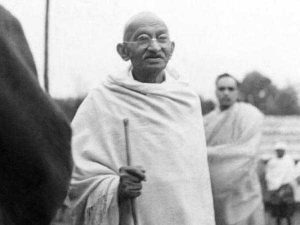
உப்பு சத்தியாகிரகம் :
காந்தியடிகள் நடத்திய பல அறவழி போராட்டங்களில் உப்பு சத்தியாகிரகம் மிகுந்த சிறப்பினை பெற்ற ஒரு போராட்டமாகும். 1930ஆம் ஆண்டு ஆங்கிலேய அரசு இந்தியாவில் இந்தியர்கள் தயாரிக்கும் உப்பிற்கு வரியினை கட்டச்சொன்னது இதனை கண்ட காந்தி மக்களை ஒன்று திரட்டி பெரும் மக்கள் கூட்டத்துடன் அகமதாபாத்தில் இருந்து 23 நாட்கள் நடைபயணம் மேற்கொண்டு தண்டியை அடைந்தார்.
அங்கு அகிம்சை வழியில் தனது போராட்டத்தினை அவர் நடத்த துவங்கினார். இதனால் ஆங்கிலேயர்களால் பலர் சிறை சென்றனர். ஆனால், மக்களின் கூட்டம் குறையவில்லை போராட்டத்தின் தீவிரம் உச்சத்தினை அடைந்தது. இதனை கண்டு ஆங்கிலேய அரசாங்கம் மிரண்டது.
உடனே போராட்டத்தின் தீவிரத்தினை உணர்ந்த ஆங்கிலேய அரசு காந்திஅடிகளுடன் பேச்சுவார்த்தை நடத்த முன்வந்தது. அந்த பேச்சுவார்த்தையில் போராட்டத்தினை நிறுத்திக்கொள்ளுங்கள். நாங்கள் வரியினை வாங்காமல் எங்களது சட்டத்தினை திரும்ப பெற்றுக்கொள்கிறோம் என்று கூறி போராட்டத்தினை நிறுத்துமாறு காந்தி அடிகளிடம் கூறினர்.
ஆங்கிலேயர்கள் உப்பிற்கான வரி சட்டத்தினை தவிர்ப்பதாக கூறியதால் அவரும் போராட்டத்தினை கைவிட்டார் . பின்பு ஆங்கிலேயர்கள் வரியினை நீக்கினார். இந்த போராட்டமானது இந்திய சுதந்திர போராட்டத்தின் மிகப்பெரும் திருப்புமுனையாக அமைந்தது.
ஆகஸ்ட் புரட்சி [அ] வெள்ளையனே வெளியேறு இயக்கம் :
சுதந்திர போராட்டத்தின் உச்சம் தான் இந்த ஆகஸ்ட் புரட்சி என்றழைக்கப்படும் “வெள்ளையனே வெளியேறு” இயக்கம். 1942ஆம் ஆண்டு ஆகஸ்ட் 8ஆம் தேதி இந்த இயக்கம் துவக்கப்பட்டது. இந்த இயக்கத்தின் மூலம் நாடு முழுவதும் ஆங்கிலேயர்களுக்கு எதிரான தனது அகிம்சை போராட்டத்தினை காந்தி முன்னின்று நடத்தினார்.
காந்தியின் அறவழி போராட்டம் நினைத்ததை விட மிக சிறப்பாக தொடர்ந்து நாடு முழுவதும் நடந்தது. இதற்கு மேல் இங்கு ஒன்றும் பண்ண இயலாது என்று ஆங்கிலேயர்கள் எண்ணும் அளவிற்கு நாடு முழுவதும் போராட்டங்கள் நடைபெற்றன.

இந்தியாவின் சுதந்திரம் அறிவிக்கப்பட்ட தருணம் :
தொடர் அறவழி போராட்டத்தின் நிறைவாக பிரிட்டிஷ் அரசு இந்தியாவிற்கு சுதந்திரம் வழங்க முன்வந்தது. அதன் படி ஆகஸ்ட் புரட்சி இயக்கம் தொடங்கப்பட்ட ஆகஸ்ட் மாதமே இந்தியாவிற்கு சுதந்திரம் வழங்க ஆங்கிலேய அரசு தெரிவித்தது. அதனை தொடர்ந்து இந்தியாவிற்கு “ஆகஸ்ட் 15 1947″ஆம் ஆண்டு இந்தியாவிற்கு சுதந்திரம் கிடைத்தது. சுதந்திரம் கிடைத்த அந்த தருணம் காந்தியடிகளின் வாழ்க்கையில் மறக்க முடியாத ஒரு நாளாக மாறியது.
காந்தி அடிகளின் இறப்பு :
அகிம்சை வழியில் தனது போராட்டங்களை நடத்தி வெற்றிகள் பல கண்ட காந்தியடிகள் அவரது இறப்பு ஆயுதம் மூலமே நடந்தது. ஆம், சுதந்திரம் அடைந்த அடுத்த வருடம் 1948 ஜனவரி 30ஆம் நாள் புது தில்லியில் “நாதுராம் கட்சே” எனும் கொடியவனால் துப்பாக்கியின் மூலம் சுடப்பட்டார். அறவழியில் அன்பினை போதித்த காந்தி கடைசியில் குண்டடிப்பட்டு தன் இன்னுயிரை துறந்தார்.
காந்தி அடிகளின் மறைவு நாடு முழுவதும் அதிர்ச்சி அலையினை ஏற்பட்டது. மேலும் நாடெங்கிலும் உள்ள மக்களும் கடும் துயர் கொண்டனர். காந்தி அடிகளின் நினைவாக அவரது பிறந்த நாளான அக்டோபர் 2 “காந்தி ஜெயந்தி” தினமாக அனுசரிக்க படுகிறது. மேலும் அவர் இறந்த ஜனவரி 30 ஆம் தேதி “தியாகிகள் தினம்” என்றும் அனுசரிக்கப்படுகிறது.
காந்தி அடிகளின் நினைவுச்சின்னங்கள் :
காந்தி மணிமண்டபம் – சென்னை கிண்டியில் காந்திக்காக தமிழக அரசு ஒரு மணிமண்டபத்தினை அமைத்து அதனை பராமரித்து வருகிறது. நூற்றுக்கணக்கான மக்கள் அதனை தினமும் ரசித்தப்படி உள்ளனர்.
காந்தி அருங்காட்சியகம் – மதுரையில் காந்தியின் நினைவாக ஒரு அருங்காட்சியகம் அமைக்கப்பட்டு பொது மக்களின் பார்வைக்காக உள்ளது.
காந்தி சிலை – முக்கடலும் கூடும் குமரிக்கரையில் காந்தியின் மார்பளவு சிலை அமைக்கப்பட்டுள்ளது . மேலும் காந்தியின் நினைவாக இந்தியா முழுவதும் பல சாலைகள் மற்றும் இடங்களுக்கு அவரது பெயர் சூட்டப்பட்டுள்ளது.
English Overview: Here we have Mahatma Gandhi biography in Tamil. Above we have Mahatma Gandhi history in Tamil. We can also say it as Mahatma Gandhi varalaru in Tamil or Mahatma Gandhi essay in Tamil or Mahatma Gandhi Katturai in Tamil.
விவேகானந்தர் வாழ்க்கை வரலாறு பற்றி தெரிந்துகொள்ள இங்கு கிளிக் செய்யவும்
RELATED ARTICLES MORE FROM AUTHOR

டாக்டர் ராதாகிருஷ்ணன் வாழ்க்கை வரலாறு | Dr Radhakrishnan history in Tamil

கரிகால சோழன் வரலாறு | Karikala cholan history in Tamil

அன்னை தெரசா வரலாறு | Annai Therasa history in Tamil
சமூக வலைத்தளம்.

மகாத்மா காந்தி பற்றிய கட்டுரை | Mahatma Gandhi History In Tamil
Table of Contents
Mahatma Gandhi History In Tamil: மகாத்மா காந்தி ஒரு இந்திய அரசியல் தலைவர் மற்றும் சமூக சீர்திருத்தவாதி ஆவார், இவர் அக்டோபர் 2, 1869 இல் இந்தியாவின் போர்பந்தரில் பிறந்தார், மேலும் மோகன்தாஸ் கரம்சந்த் காந்தி என்று அழைக்கப்பட்டார்.
காந்தி ஒரு பயிற்சி பெற்ற வழக்கறிஞர் ஆவார், இவர் இந்திய தேசிய காங்கிரஸின் தலைவராக 1915 இல் இந்தியா திரும்புவதற்கு முன்பு தென்னாப்பிரிக்காவில் பயிற்சி செய்தார். அரசியல் மற்றும் சமூக சீர்திருத்தத்தை அடைய, புறக்கணிப்பு மற்றும் வேலைநிறுத்தங்கள் போன்ற வன்முறையற்ற எதிர்ப்பைப் பயன்படுத்த இவர் வாதிட்டார், மேலும் இவர் இந்தியாவில் “தேசத்தின் தந்தை” என்று அறியப்பட்டார்.
1947 இல் பிரிட்டிஷ் ஆட்சியிலிருந்து இந்தியா சுதந்திரம் பெறுவதற்கு காந்தி முக்கியப் பங்காற்றினார், மேலும் மத சகிப்புத்தன்மை மற்றும் இந்தியப் பிரிவினை பற்றிய அவரது கருத்துக்களுடன் உடன்படாத ஒரு இந்து தேசியவாதியால் ஜனவரி 30, 1948 அன்று இவர் படுகொலை செய்யப்பட்டார். இந்திய சுதந்திர இயக்கத்தின் தலைவராக அவரது மரபு மற்றும் அகிம்சை எதிர்ப்பின் தத்துவம் உலகெங்கிலும் உள்ள மக்களை தொடர்ந்து ஊக்குவிக்கிறது. மகாத்மா காந்தியடிகளைப் பற்றி விரிவாக இக்கட்டுரையில் காண்போம்.
மகாத்மா காந்தி பற்றிய கட்டுரை | Mahatma Gandhi Katturai In Tamil
காந்தியின் இளமை காலம்
காந்தியடிகள் குஜராத் மாநிலத்திலுள்ள போர்பந்தர் என்னும் ஊரில் 1869 ஆம் ஆண்டு அக்டோபர் திங்கள் 2 ஆம் நாள் பிறந்தார். இவரின் தந்தையார் பெயர் கரம்சந்த் காந்தி, தாய் புத்திலிபாய் அம்மையார். தாயிடம் இறை உணர்வையும் அன்பினையும் செலுத்தக் கற்றுக் கொண்டார். பின்னர் இங்கிலாந்தில் தன்னுடைய பாரிஸ்டர் பட்டத்தினைப் பெற்றார். இவரது 12 ஆம் வயதில் கஸ்தூரி பாய் என்பவரைக் கரம் பிடித்தார் . ஆனால் அதன்பின்பு 19 ஆம் வயதில் தான் பாரிஸ்டர் படிக்கச் சென்றார்.
காந்தியின் பள்ளி வாழ்க்கை
காந்தி ஒரு அடக்கமான மாணவர் ஆனால் நேர்மையான மாணவர். காந்தி தனது 18வது வயதில் பாரிஸ்டர் படிப்பதற்காக இங்கிலாந்து சென்றார். வழக்கறிஞராகப் பட்டம் பெற்ற பிறகு சில காலம் மும்பையில் வழக்கறிஞராகப் பணியாற்றினார்.
குஜராத்தின் ராஜ்கோட்டில், நீதிமன்றத்திற்குச் செல்வோரின் விண்ணப்பங்களை நிரப்பும் பணியில் ஈடுபட்டார். 1893 இல், ஒரு இந்திய நிறுவனத்தின் உதவியுடன், இவர் தென்னாப்பிரிக்காவில் பணிபுரியும் பயணத்தைத் தொடங்கினார்.
தென்னாப்பிரிக்காவில் ஆங்கிலேயர் ஆட்சியின் போது நிறவெறி மற்றும் இனப் பாகுபாடு அதிகமாக இருந்தது. இது காந்தியின் மனதை புண்படுத்தியது. தென்னாப்பிரிக்காவில் மகாத்மா காந்தியடிகள் அனுபவங்கள் அவரை ஒரு பெரிய அரசியல் சக்தியாக மாற்றியது.
காந்தியடிகள் கண்ட வெற்றி
‘கத்தியின்றி ரத்தமின்றி’ போராடியதால் ஆங்கிலேய அரசு அவரது உறுதிகண்டு ஒரு வழியாக இந்தியாவிற்கு விடுதலை தர சம்மதித்ததன் காரணமாக 1947 ஆகஸ்ட் -15 நம்முடைய சுதந்திர நாளாக அறிவிக்கப்பட்டது.
காந்தியின் மனவலிமையும் சுய உணர்வும்
உயிரினமாகப் பிறந்த எதற்கும் ஒரு விதமான மனவலிமையும் சுயஉணர்வும் உண்டு. வேண்டுமானால் காலம் அதனைத் தள்ளி வைத்திருக்கலாம். அவ்வகையில் காந்தியடிகளின் வாழ்வில் பல சம்பவங்கள் நடைப்பெற்றது.
இவர் தென்னாப்ரிக்காவில் 1893 ஆம் ஆண்டு முதல் 1914 ஆம் ஆண்டு வரையில் வழக்கறிஞராகப் பணிபுரிந்தார். ஆங்கிலேயரின் ஆதிக்கத்தில் இருந்த தென்னாப்பிரிக்காவில் இந்தியர்களுக்கு எதிரான நிறவெறிக் கொள்கைகள் இருந்ததனைக் கண்டு மனம் கொதித்தார். காந்தி ஒருமுறை
இரவில் பயணம் செய்வதற்கான பயணச் சீட்டினை பெற்றார். ஆனாலும் இரயிலில் பயணம் செய்ய வாய்ப்பு வழங்கப்பட முடியாது என்று மறுக்கப்பட்டது. இதனைப் பற்றி மிகவும் சிந்தித்தபடியே இருந்தபோது
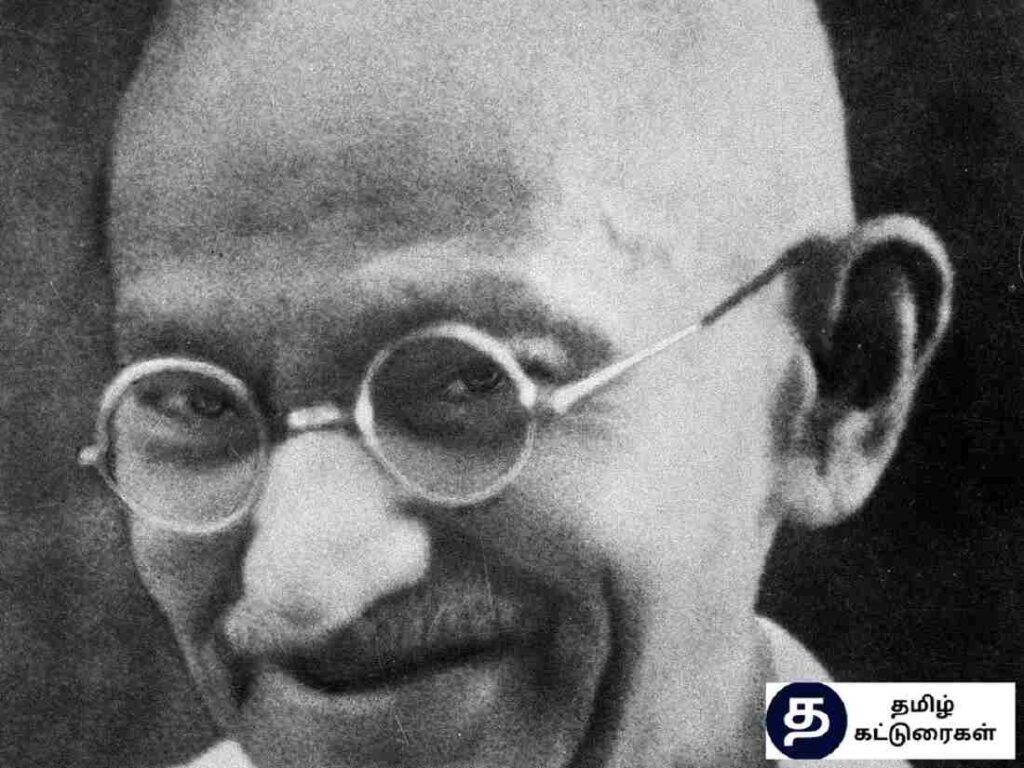
மற்றொரு பயணத்தில் வண்டியிலேயே இவரை உட்கார அனுமதிக்கவில்லை. ஆனாலும் போராடி இறுதில் ஓட்டுனருடன் அமர்ந்து பயணம் செய்தார்.
மகாத்மா காந்தி நடத்திய சில குறிப்பிடத்தக்க போராட்டங்கள்
தென்னாப்பிரிக்காவில் இருந்தபோது நேரில் கண்ட பல கொடுமைகளின் காரணமாக அங்கே ஆங்கிலேயர்களுக்கு எதிராக சட்டமறுப்பு இயக்கத்தைத் தொடங்கினார். 1914 ஆம் ஆண்டிற்கு பின்னர் இந்தியா திரும்பிய காந்தியடிகள் இந்திய சுதந்திர போராட்டத்தில் களம் இறங்கினார். பாலகங்காதர திலகரின் மறைவிற்குப் பின்னர் இந்திய சுதந்திர வீரர்களை வழிநடத்தும் பொறுப்பை ஏற்றுக் கொண்டார்.
Mahatma Gandhi Katturai In Tamil: ஆனால் திலகர் போன்ற தீவிரவாத முறைகளைப் பின்பற்றாமல் மிதவாதம் எனப்படும் அகிம்சை முறையைப் பின்பற்றினார். போராட்டத்திற்கு தன்னுடைய இந்த அன்றைக்கு கோபால கிருஷ்ண கோகலேவை தன்னுடைய குருவாகவும் ஏற்றுக்கொண்டார். ரௌலட் சட்டம் அடக்குமுறையில். ஆங்கிலேயரின் சட்டங்களை வாய்மை வழியிலேயே எதிர்த்தார். சுதேசி இயக்கத்- -தினை ஆதரிக்க வேண்டி கதர் ஆடைகளை உடுத்தினார். 1930 ஆம் ஆண்டு மார்ச் 12 ஆம் நாள் ஆங்கிலேயர்களுக்கு எதிரான ஒத்துழையாமை இயக்கத்தை அதே ஆண்டில் ஏப்ரல் மாதம் 6 ஆம் நாள் உப்பின் மீதான வரியை எதிர்த்து 2500 தொண்டர்களுடன் உப்பு சத்தியாகிரகம் செய்தார். 1942-இல் வெள்ளையனே வெளியேறு இயக்கத்தினையும். நடத்தினார்.
ஆங்கிலேயரை மட்டுமின்றி அதே நேரத்தில் இந்தியர்களை ஆக்கிரமித்திருந்த மத வேறுபாடு, தீண்டாமை, பெண் அடிமை போன்ற கொடுமைகளுக்கு எதிர்ப்புக் குரல் கொடுத்தார்.
ஒத்துழையாமை இயக்கம் (1920-1922)
1920 ஆம் ஆண்டில், காந்தி இந்தியாவில் ஆங்கிலேயர் ஆட்சிக்கு எதிராக ஒத்துழையாமை இயக்கத்தைத் தொடங்கினார். இந்த இயக்கம் பிரிட்டிஷ் பொருட்கள், சேவைகள் மற்றும் நிறுவனங்களை புறக்கணிப்பதன் மூலம் பிரிட்டிஷ் அதிகாரத்திற்கு சவால் விடுவதை நோக்கமாகக் கொண்டது. வெளிநாட்டில் தயாரிக்கப்பட்ட ஆடைகளை எரிக்குமாறு மக்களைக் கேட்டுக் கொண்ட காந்தி, கையால் நூற்பு மற்றும் கையால் நெய்யப்பட்ட இந்தியத் துணியான காதியைப் பயன்படுத்த ஊக்குவித்தார். இந்த இயக்கம் பரவலான எதிர்ப்புகள் மற்றும் கீழ்ப்படியாமைக்கு வழிவகுத்தது, மேலும் இது இந்தியாவின் சுதந்திரப் போராட்டத்தில் குறிப்பிடத்தக்க பங்கைக் கொண்டிருந்தது.
உப்பு சத்தியாகிரகம் (1930)
1930 ஆம் ஆண்டில், காந்தி தண்டி அணிவகுப்பு என்று அழைக்கப்படும் உப்பு சத்தியாக்கிரகத்தைத் தொடங்கினார். உப்பின் மீதான பிரித்தானிய ஏகபோகத்திற்கு பதிலடி கொடுக்கும் வகையில், இந்தியர்கள் உப்பை உற்பத்தி செய்வது அல்லது விற்பனை செய்வது சட்டவிரோதமானது. காந்தியும் அவரது சீடர்களும் 240 மைல்களுக்கு மேல் பயணம் செய்து கடலோர நகரமான தண்டிக்கு சென்றனர், அங்கு இவர்கள் பிரிட்டிஷ் சட்டத்தை மீறி உப்பு உற்பத்தி செய்தனர். எதிர்ப்பு பரவலான கீழ்ப்படியாமைக்கு வழிவகுத்தது, மேலும் பல இந்தியர்கள் பிரிட்டிஷ் ஆட்சியை மீறி தங்கள் சொந்த உப்பைத் தயாரிக்கத் தொடங்கினர்.
வெள்ளையனே வெளியேறு இயக்கம் (1942)
1942 ஆம் ஆண்டில், காந்தி வெள்ளையனே வெளியேறு இயக்கத்தைத் தொடங்கினார், இது இந்தியாவில் இருந்து பிரிட்டிஷ் ஆட்சியை உடனடியாக திரும்பப் பெற அழைப்பு விடுத்தது. இந்த இயக்கம் வெகுஜன எதிர்ப்புகள், வேலைநிறுத்தங்கள் மற்றும் ஒத்துழையாமை ஆகியவற்றால் குறிக்கப்பட்டது, இதன் விளைவாக 100,000 பேர் கைது செய்யப்பட்டனர். பிரிட்டிஷ் அரசாங்கம் மிருகத்தனமான சக்தியுடன் பதிலளித்தது, இறுதியில் இந்த இயக்கம் ஒடுக்கப்பட்டது, ஆனால் 1947 இல் இந்தியாவின் சுதந்திரத்தில் அது குறிப்பிடத்தக்க பங்கைக் கொண்டிருந்தது.
சம்பரன் சத்தியாகிரகம் (Champaran) (1917)
1917 ஆம் ஆண்டில், பீகாரின் சம்பாரண் மாவட்டத்தில் இண்டிகோ விவசாயத்தின் அடக்குமுறை முறைக்கு எதிராக காந்தி சம்பரன் சத்தியாகிரகத்தைத் தொடங்கினார். பிரிட்டிஷ் தோட்டக்காரர்கள் ஏழை விவசாயிகளை அவர்களது நிலத்தில் மூன்றில் ஒரு பங்கு நிலத்தில் இண்டிகோவை வளர்க்கும்படி கட்டாயப்படுத்தினர், இதன் விளைவாக வறுமை மற்றும் பட்டினி ஏற்பட்டது. காந்தியின் எதிர்ப்பு இண்டிகோ பங்கு பயிர் முறை குறைக்கப்பட்டது மற்றும் விவசாயிகளின் வாழ்க்கை நிலைமைகளில் குறிப்பிடத்தக்க முன்னேற்றத்திற்கு வழிவகுத்தது.
கேடா சத்தியாகிரகம் (Kheda) (1918)
1918 ஆம் ஆண்டில், குஜராத்தில் உள்ள கெடா மாவட்ட மக்கள் மீது அதிக வரி விதிக்கும் பிரிட்டிஷ் அரசாங்கத்தின் முடிவை எதிர்த்து காந்தி கேடா சத்தியாகிரகத்தை தொடங்கினார். ஆர்ப்பாட்டத்தில் வன்முறையற்ற ஒத்துழையாமை மற்றும் வரி செலுத்த மறுப்பு ஆகியவை அடங்கும். பிரிட்டிஷ் அரசாங்கம் இறுதியில் மனந்திரும்பியது மற்றும் வரியை நிறுத்தியது, இது இந்திய மக்களுக்கு குறிப்பிடத்தக்க வெற்றியாகும்.
காந்தியடிகளால் எழுதப்பட்ட கட்டுரைகள்
காந்தி தனது வாழ்நாள் முழுவதும் அரசியல், பொருளாதாரம், மதம் மற்றும் சமூக நீதி உள்ளிட்ட பல்வேறு தலைப்புகளில் விரிவாக எழுதினார். அகிம்சை மீதான அவரது அர்ப்பணிப்பு, ஆழ்ந்த ஆன்மீகம் மற்றும் நீதி மற்றும் சமத்துவத்திற்கான அவரது அசைக்க முடியாத அர்ப்பணிப்புக்கு அவரது எழுத்துக்கள் ஒரு சான்றாகும்.

அரசியல் தத்துவம்
காந்தியின் அரசியல் தத்துவம் சமூக மற்றும் அரசியல் மாற்றத்தை அடைவதற்கான வழிமுறையாக அகிம்சையின் சக்தியில் இவர் கொண்டிருந்த நம்பிக்கையில் வேரூன்றி இருந்தது. வன்முறை அதிக வன்முறையை மட்டுமே பிறப்பிக்கும் என்றும், அடக்குமுறை மற்றும் அநீதியை சவால் செய்வதற்கு அமைதியான எதிர்ப்பு மிகவும் பயனுள்ள வழியாகும் என்றும் இவர் நம்பினார்.
காந்தியும் ஜனநாயக ஆட்சியின் முக்கியத்துவத்தை நம்பினார், மேலும் இவர் பங்கேற்பு ஜனநாயகத்திற்கான வலுவான வக்கீலாக இருந்தார். ஒவ்வொருவருக்கும் தங்கள் வாழ்க்கையைப் பாதிக்கும் முடிவுகளில் கருத்து சொல்ல உரிமை உண்டு என்றும், ஒரு அரசாங்கம் மக்களுக்குப் பொறுப்பேற்க வேண்டும் என்றும் இவர் நம்பினார்.
Mahatma Gandhi History In Tamil: காந்தி தனது “இந்தியன் ஹோம் ரூல்” என்ற கட்டுரையில், பிரிட்டிஷ் காலனித்துவ ஆட்சியிலிருந்து விடுபட்ட சுதந்திர இந்தியாவுக்கான தனது பார்வையை வகுத்தார். அமைதியான மற்றும் வன்முறையற்ற போராட்டத்தின் மூலம் மட்டுமே இந்தியா உண்மையான சுதந்திரத்தை அடைய முடியும் என்றும், இந்தப் போராட்டத்திற்கு இந்திய மக்களின் தீவிரப் பங்களிப்பு தேவைப்படும் என்றும் இவர் வாதிட்டார். பிரிட்டிஷ் ஆட்சிக்கு சவால் விடும் வகையில் இந்தியர்கள் பிரிட்டிஷ் பொருட்களைப் புறக்கணிக்கவும், வரி செலுத்த மறுக்கவும், கீழ்ப்படியாமை செயல்களில் ஈடுபடவும் இவர் அழைப்பு விடுத்தார்.
பொருளாதார தத்துவம்
காந்தியின் பொருளாதாரத் தத்துவம் தன்னிறைவு மற்றும் நிலைத்தன்மையின் கருத்தை அடிப்படையாகக் கொண்டது. ஒரு தேசம் அதன் சொந்த பொருட்களையும் சேவைகளையும் உற்பத்தி செய்ய முடியும் என்றும், அதன் பொருளாதார பிழைப்புக்கு வெளிநாட்டு சக்திகளைச் சார்ந்து இருக்கக்கூடாது என்றும் இவர் நம்பினார்.
காந்தி கிராமப்புற மேம்பாட்டிற்காகவும், இந்தியாவின் கிராமப்புற சமூகங்களை மேம்படுத்துவதற்காகவும் வலுவான வக்கீலாக இருந்தார். கிராமப்புறங்கள் இந்தியாவின் இதயம் மற்றும் ஆன்மா என்றும், அதன் கிராமப்புற சமூகங்கள் வலுவாகவும் தன்னிறைவு பெற்றதாகவும் இருந்தால் மட்டுமே உண்மையான பொருளாதார செழிப்பை அடைய முடியும் என்று இவர் நம்பினார்.
” The Moral Basis of Co-operation” என்ற தனது கட்டுரையில், எந்தவொரு பொருளாதார அமைப்பின் வெற்றிக்கும் ஒத்துழைப்பு அவசியம் என்று காந்தி வாதிட்டார். மக்கள் தங்கள் சுயநலன்களைத் தொடராமல், பொது நலனுக்காக ஒன்றிணைந்து செயல்பட வேண்டும் என்று இவர் நம்பினார். பொருளாதார மேம்பாடு தார்மீகக் கொள்கைகளால் வழிநடத்தப்பட வேண்டும் என்றும், அது சுற்றுச்சூழலுக்கும் அல்லது எதிர்கால சந்ததியினரின் நல்வாழ்வுக்கும் இழப்பு வரக்கூடாது என்றும் இவர் நம்பினார்.
மத தத்துவம்
காந்தி ஒரு ஆழ்ந்த ஆன்மீக நபர், மற்றும் அவரது மத தத்துவம் அவரது வாழ்க்கை மற்றும் பணிக்கு மையமாக இருந்தது. உள் அமைதி மற்றும் தனிப்பட்ட வளர்ச்சியை அடைவதற்கான வழிமுறையாக ஆன்மீக பயிற்சியின் முக்கியத்துவத்தை இவர் நம்பினார், மேலும் இவர் பல்வேறு மதங்களின் போதனைகளிலிருந்து உத்வேகம் பெற்றார்.
காந்தியின் மதத் தத்துவம் அகிம்சை அல்லது அகிம்சையில் வேரூன்றி இருந்தது. அனைத்து உயிரினங்களும் ஒன்றோடொன்று இணைக்கப்பட்டுள்ளன என்றும், ஒரு உயிரினத்திற்கு தீங்கு விளைவிப்பது அனைத்து உயிரினங்களுக்கும் தீங்கு விளைவிப்பதற்கு சமம் என்றும் இவர் நம்பினார். சமூக மற்றும் அரசியல் மாற்றத்தை அடைவதற்கு அகிம்சையே மிகச் சிறந்த வழி என்றும் இவர் நம்பினார்.
“என் நம்பிக்கை” என்ற தனது கட்டுரையில், காந்தி தனது ஆன்மீக பயணம் மற்றும் உண்மை, அன்பு மற்றும் அகிம்சையின் முக்கியத்துவம் பற்றிய நம்பிக்கையைப் பற்றி எழுதினார். இவர் எழுதினார், “உலகின் அனைத்து பெரிய மதங்களின் அடிப்படை உண்மையை நான் நம்புகிறேன். அவை அனைத்தும் கடவுளால் கொடுக்கப்பட்டவை என்று நான் நம்புகிறேன், இந்த மதங்கள் வெளிப்படுத்தப்பட்ட மக்களுக்கு அவை அவசியம் என்று நான் நம்புகிறேன்.” இவர் அனைத்து மதங்களையும் ஆன்மீக அறிவொளியின் ஒரே இறுதி இலக்குக்கான வெவ்வேறு பாதைகளாகக் கண்டார்.
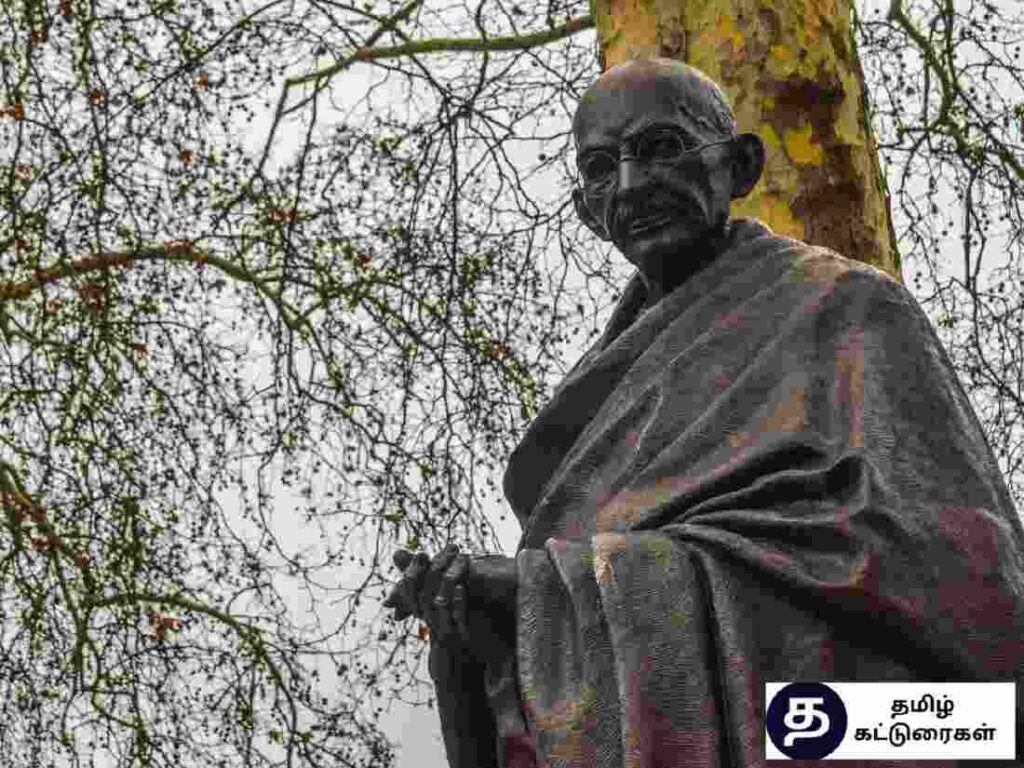
Mahatma Gandhi History In Tamil: மதமும் அரசியலும் நெருங்கிய தொடர்புடையவை என்றும், மதக் கோட்பாடுகள் அரசியல் நடவடிக்கைகளுக்கு வழிகாட்ட வேண்டும் என்றும் காந்தி நம்பினார். அரசியல் தலைவர்களுக்கு நேர்மை மற்றும் கருணையுடன் செயல்பட வேண்டிய பொறுப்பு உள்ளது என்றும், அவர்கள் நீதி மற்றும் சமத்துவ சமுதாயத்தை உருவாக்க உழைக்க வேண்டும் என்றும் இவர் நம்பினார்.
காந்தி சமூக நீதிக்காக ஒரு வலுவான வக்கீலாக இருந்தார், மேலும் இவர் தனது வாழ்க்கையின் பெரும்பகுதியை பாகுபாடு மற்றும் சமத்துவமின்மைக்கு எதிராக போராட அர்ப்பணித்தார். இனம், மதம் அல்லது சமூக அந்தஸ்தைப் பொருட்படுத்தாமல் அனைத்து மக்களும் சமம் என்று இவர் நம்பினார், மேலும் இவர் விளிம்புநிலை சமூகங்களின் உரிமைகள் மற்றும் நலன்களை மேம்படுத்த அயராது உழைத்தார்.
இந்தியாவின் தீண்டத்தகாதவர்கள் அல்லது சமூகப் படிநிலையின் அடிமட்டத்தில் இருப்பதாகக் கருதப்படும் தலித்துகளின் அவலநிலை குறித்து காந்தி குறிப்பாக அக்கறை கொண்டிருந்தார். தலித்துகள் சம உரிமைகள் மற்றும் வாய்ப்புகளுக்கு தகுதியானவர்கள் என்று இவர் நம்பினார், மேலும் இந்திய சமூகத்தில் இருந்து தீண்டாமை நடைமுறையை ஒழிக்க இவர் பாடுபட்டார்.
“தி ஐடியல் பாங்கி”(The Ideal Bhangi) என்ற தனது கட்டுரையில், காந்தி அவர்கள் தொழில் அல்லது சமூக அந்தஸ்தைப் பொருட்படுத்தாமல், அனைத்து மக்களும் மரியாதையுடனும் கண்ணியத்துடனும் நடத்தப்படும் ஒரு சமூகத்திற்கான தனது பார்வையைப் பற்றி எழுதினார். ஒவ்வொருவருக்கும் சமூகத்திற்குப் பங்களிக்க மதிப்புமிக்க ஒன்று இருப்பதாகவும், அவர்களின் பின்னணி அல்லது சூழ்நிலைகள் காரணமாக யாரும் ஓரங்கட்டப்படவோ அல்லது ஒதுக்கப்படவோ கூடாது என்று அவர் நம்பினார்.
Mahatma Gandhi Katturai In Tamil: மிகவும் விரிந்த சிந்தனையுடன் இந்திய நாட்டையும் மக்களையும் மிகவும் நேசித்து, நமக்காக வாழ்ந்த நம் மகானை, நம் ஒருவனான ‘கோட்சே’ என்பவன் 1948 ஆம் ஆண்டு ஜனவரி மாதம் 30 ஆம் நாள் சுட்டுக் கொன்றான். தன்னை சுட்டவனைக் கூட மன்னித்த மகான் இவர்.
மகாத்மா காந்தியின் வாழ்க்கையும் பணியும் உலகெங்கிலும் உள்ள மக்களை இன்றுவரை ஊக்கப்படுத்துகின்றன. அவரது அரசியல் மற்றும் ஆன்மீகத் தத்துவம் அகிம்சை, ஜனநாயகம், தன்னிறைவு மற்றும் சமூக நீதி ஆகிய கொள்கைகளில் வேரூன்றியிருந்தது, மேலும் அவரது எழுத்துக்கள் மிகவும் நியாயமான மற்றும் சமமான உலகத்தை உருவாக்க உறுதிகொண்டுள்ள மக்களுக்கு நுண்ணறிவு மற்றும் உத்வேகத்தின் மதிப்புமிக்க ஆதாரமாகத் தொடர்கின்றன.
காந்தி தனது அயராத உழைப்பு மற்றும் அகிம்சை மீதான தனது அர்ப்பணிப்பு மூலம், வன்முறை அல்லது பலத்தை நாடாமல் பெரிய விஷயங்களைச் சாதிக்க முடியும் என்பதைக் காட்டினார். அடக்குமுறை மற்றும் அநீதியின் மிகவும் வேரூன்றிய வடிவங்கள் கூட அமைதியான எதிர்ப்பு மற்றும் உண்மை, அன்பு மற்றும் இரக்கத்தின் சக்தியின் மூலம் சவால் மற்றும் சமாளிக்க முடியும் என்பதை இவர் நிரூபித்தார்.
உலகில் மாற்றத்தை ஏற்படுத்தும் ஆற்றல் நம் ஒவ்வொருவருக்கும் உள்ளது என்பதையும், இரக்கத்துடனும் உறுதியுடனும் இணைந்து பணியாற்றுவதன் மூலம், அனைவருக்கும் மிகவும் நியாயமான, அமைதியான மற்றும் நிலையான உலகத்தை உருவாக்க முடியும் என்பதை காந்தியின் மரபு நமக்கு நினைவூட்டுகிறது.
மனிதன் தன் செயல்களின் மூலமாக மாகாத்மாவாக மாற முடியும் என்று சாதித்துக் காட்டி மற்றவர்களுக்காக தன் உடல் பொருள், ஆவி அனைத்தினையும் இழந்த அந்த மகானைப் பற்றி பேசி முடியாது. ஆனால் இவர் வழியில் வாழ முடியும். இதுவே நாம் அவருக்குச் செய்யும். கடமையாகும்.
இதையும் நீங்கள் படிக்கலாம்…
Leave a Comment Cancel reply
Save my name, email, and website in this browser for the next time I comment.
தமிழ் டிப்ஸ்
- [ October 20, 2023 ] தொண்டை புற்றுநோய் அறிகுறிகள் Health
- [ October 20, 2023 ] விந்தணு குறைபாடு அறிகுறிகள் Health
- [ October 20, 2023 ] சமத்துவமே மகத்துவம் கட்டுரை கட்டுரைகள்
- [ October 20, 2023 ] பூமி நமக்கு சொந்தமானது அல்ல நாம் பூமிக்கு சொந்தமானவர்கள் கட்டுரை கட்டுரைகள்
- [ October 20, 2023 ] மண் வளம் காப்போம் கட்டுரை கட்டுரைகள்
- மகாத்மா காந்தி பற்றிய கட்டுரை
- Mahatma Gandhi Katturai In Tamil
இந்த பதிவில் “மகாத்மா காந்தி பற்றிய கட்டுரை” (Mahatma Gandhi Katturai In Tamil) காணலாம்.
மகாத்மா காந்தி இந்தியாவின் தேசபிதா என்று அழைக்கப்படும் அகிம்சை வழியில் இந்தியாவுக்காக போராடிய போராளி.
கட்டுரை போட்டிகள் மட்டும் கட்டுரை பரீட்சை போன்றவற்றுக்கு இந்த கட்டுரை பயனுள்ளதாக இருக்கும்.
Table of Contents
குறிப்பு சட்டகம்
- சுதந்திர போராட்டம்
சுதந்திர இந்தியாவின் “தேசபிதா” என வர்ணிக்கப்படும் மகாத்மா காந்தி உலகின் தலைசிறந்த தலைவர்களில் ஒருவராவார் பிரித்தானியர்களிடம் அடிமைப்பட்டு கிடந்த இந்திய தேசத்தை சுதந்திரமடைய செய்ததில் இவரின் பங்கு அளப்பரியதாகும்.
அகிம்சை எனும் வளியில் தேசப்பற்றை இந்திய மக்களிடம் கொண்டு போய் சேர்த்த மகான் ஆவார் இன்றும் இந்திய அரசியலின் முன்னோடியாக பெருமைப்படுத்தப்படுகிறார்.
இந்தியாவின் அரச அலுவலகங்கள் நிறுவனங்களின் காந்தியின் படம் பொறிக்கப்பட்டிருக்கும் இந்தியா பண தாள்களின் காந்தியின் தலை பொறிக்கப்பட்டு இருக்கும் இவ்வாறு மக்கள் இவரை பெருமைப்படுத்துகிறார்கள்.
இவருடைய பிறப்பு வளர்ச்சி கல்வி அவர் இந்தியாவில் ஆற்றிய பணிகள் சுதந்திர போரட்டத்தில் அவரது பங்கு போன்ற விடயங்களை இக்கட்டுரை தெளிவு செய்கிறது.
காந்தியின் முழுப்பெயர் மோகன்தாஸ் கரம்சந் காந்தி ஆகும் இவர் 1869 ஆண்டு அக்டோபர் 2ம் திகதி இந்தியாவின் குஜராத் மாநிலம் போர்பந்தர் எனும் இடத்தில் இவர் பிறந்தார்.
இவரின் தாய்மொழி குஜராத்தி மொழி ஆகும் இவர் தனது 13 ஆவது வயதில் கஸ்த்தூரி பாய் என்பவரை திருமணம் செய்து கொண்டார். சிறு வயதில் காந்தி பார்த்த அரிச்சந்திரா நாடகம் அவர் மனதில் பெரும் தாக்கத்தை ஏற்படுத்தியது.
இவர் தனது 16 ஆவது வயதில் தந்தையை இழந்தார் காந்தி கஸ்த்தூரி பாய் தம்பதியினருக்கு 4 ஆண் குழந்தைகள் பிறந்தன . இவ்வாறு தனது குடும்ப வாழ்வோடு நின்று விடாமல் சமூக பற்றுடையவராக காந்தி வாழ்ந்தார்.
படிப்பில் சுமாரான மாணவராக இருந்தாலும் நேர்மையான மாணவனாக விளங்கினார் தனது 18 வது வயதில் பாரிஸ்டர் எனப்படும் வழக்கறிஞர் கல்விக்காக இங்கிலாந்து சென்றார்.
வழக்கறிஞர் கல்வியை முடித்து இந்தியா திரும்பி சிறிது காலம் வழக்கறிஞராக மும்பையில் பணியாற்றினார்.
குஜராத் மாநிலம் ராஜ்கோட்டில் நீதிமன்றத்திற்கு வருபவர்களின் விண்ணப்படிவங்களை நிரப்பும் பணியை செய்தார் 1893 இல் ஒரு இந்திய நிறுவனத்தின் உதவியால் தென்னாபிரிக்காவில் பணி புரிய பயணம் ஆனார்.
தென்னாபிரிக்காவில் ஆங்கிலேயர் ஆட்சியில் நிறவெறியும் இனப்பாகுபாடும் மேலோங்கி இருந்தது இது காந்தியை வெகுவாக பாதித்தது தென்னாபிரிக்காவில் காந்திக்கு ஏற்பட்ட அனுபவங்கள் பின்னாளில் அவரை மாபெரும் அரசியல் சக்தியாக மாற்றியது.
இவர் தென்னாபிரிக்காவின் பிரிட்டேரியா செல்ல ரயிலில் ஏறிய காந்தி ஒரு வெள்ளையர் இல்லை என்பதற்காக ரயிலில் இருந்து தூக்கியெறியப்பட்டார் அதே ரயில் நிலையத்தில் இன்று காந்தியின் சிலை வைக்கப்பட்டுள்ளது.
தென்னாபிரிக்காவின் கறுப்பின மக்களும் அங்கே குடியேறிய இந்திய மக்களும் படும் இன்னல்களை காந்தி நன்குணர்ந்து தென்னாபிரிக்காவில் இந்தியர்களின் வாக்குரிமையை பறிக்கும் தீர்மானத்தை எதிர்த்தார்.
1894 இல் தென்னாபிரிக்காவில் “நாட்டல் இந்தியா காங்கிரஸ்” என்ற கட்சியை ஆரம்பித்து அவரே பொறுப்பானார். 1906 இல் ஜொகனஸ்பேர்க் இல் நடந்த போராட்டத்தில் முதன் முதலாக அறவழி போராட்டத்தை துவங்கினார்.
அகிம்சை ஒத்துழையாமை கொடுக்கப்படும் தண்டனையை ஏற்றல் ஆகியன அறவழி போராட்டத்தின் பண்புகளாகும்.
அறவழி போராட்டத்தின் மூலம் தென்னாபிரிக்காவில் வாழும் இந்தியர்களின் சமூக நிலையை மேம்படுத்தும் முயற்சியில் காந்தி வெற்றி கண்டார் பின்பு 1915 இல் இந்தியா திரும்பினார்.
விடுதலை போராட்டம்
இந்தியாவில் தனது சொந்த நாட்டு மக்கள் ஆங்கிலேயரிடம் அடிமைப்படுவதை கண்டு வேதனை அடைந்த காந்தி “இந்திய தேசிய காங்கிரஸ்” இல் இணைந்து ஆங்கிலேயருக்கு எதிரான விடுதலை போராட்டத்தில் முழு வீச்சில் ஈடுபட்டார்.
1924 இல் “இந்திய தேசிய காங்கிரஸ்” இயக்கத்தின் தலைவரானார் காந்தி தலைமையேற்றவுடன் காங்கிரஸ் இல் பல மாற்றங்களை ஏற்படுத்தி இயக்கத்திற்கு புத்துயிர் ஊட்டினார்.
அறப்போராட்டம் சுதேசி போன்ற கொள்கைகளை வலியுறுத்தி காங்கிரஸ் இயக்கத்தை மாபெரும் விடுதலை இயக்கம் ஆக்கினார் இவர் முதலில் விவசாயிகளுக்கான “சம்பாரண்” போராட்டத்தை மேற்கோண்டார்.
பீகாரில் முதன்முதலில் சத்தியாக்கிரகம் எனும் வழியை வெற்றிகரமாக பயன்படுத்தினார்.
1930இல் 240 மைல் நடைபயணம் இந்திய வரலாற்றில் உப்பு சத்தியாகிரகம் என்று சொல்லப்படுகிறது இந்திய போராட்ட வரலாற்றில் இது ஒரு திருப்பு முனையாகும்.
1942 ஆங்கில அரசுக்கு எதிராக “வெள்ளையனே வெளியேறு” போராட்டத்தில் காந்தி பெரும் பங்காற்றினார் 1948 இல் இந்தியா சுதந்திரம் பெற முக்கியமான ஒருவராக மகாத்மா காந்தி விளங்கினார்.
இவருக்கு இரவீந்திர நாத் தாகூர் “மகாத்மா” என்ற பட்டம் வழங்கி கௌரவித்தார்.
இந்திய அரசியல் மட்டுமன்றி உலக மக்களுக்கும் முன்னுதாரணமான தலைவராக மகாத்மா காந்தி தன் வாழ்வில் சத்தியம் நேர்மை அகிம்சை ஆகிய கொள்கைகளை கடைப்பிடித்து வாழ்ந்து காட்டிய மகான் ஆவார்.
இவர் குஜராத் மொழியில் எழுதிய தனது சுயசரிதை சத்தியசோதனை என தமிழில் மொழிபெயர்க்கப்பட் பிரபல நூலாகும்.
காந்தியை பெருமைப்படுத்தும் வகையில் இந்தியாவில் பல இடங்களில் நினைவுச்சிலைகளும் அருங்காட்சியகங்களும் அமைக்கப்பட்டு இருக்கின்றன.
இந்திய கல்வி திட்டத்தில் காந்தியின் வரலாறு ஒரு பாடமாகவும் கற்பிக்கபடுகிறது ஆக மக்களுக்காக வாழ்ந்த காந்தியடிகளின் வாழ்க்கை நமக்கும் ஓர் உந்துதலாக இருக்கும் என்பதில் ஜயமல்லை.
You May Also Like:
காடுகளின் பயன்கள் கட்டுரை
முயற்சி திருவினையாக்கும் கட்டுரை
- Katturai In Tamil
- Mahatma Gandhi
- Mahatma Gandhi Katturai
- மகாத்மா காந்தி
- மகாத்மா காந்தி கட்டுரை
Related Articles

அறிவியல் வளர்ச்சி கட்டுரை

காந்தியின் கொள்கைகள் கட்டுரை

மரம் வளர்ப்போம் கட்டுரை
Copyright © Reserved By All Tamil Tips 2023

தமிழ் கட்டுரைகள்
Katturai in tamil.
- [ January 21, 2024 ] தூய்மை இந்தியா பேச்சு போட்டி பேச்சு போட்டி கட்டுரைகள்
- [ January 21, 2024 ] நான்கு எழுத்து சொற்கள் தமிழ்
- [ January 21, 2024 ] மூன்று எழுத்து சொற்கள் தமிழ்
- [ January 21, 2024 ] இரண்டு எழுத்து சொற்கள் தமிழ்
- [ January 21, 2024 ] எட்டுத்தொகை நூல்கள் கட்டுரை தமிழ்
மகாத்மா காந்தி பற்றிய கட்டுரை தமிழ்
- Mahatma Gandhi Katturai In Tamil
இந்தியாவில் தனது சொந்த நாட்டு மக்கள் ஆங்கிலேயரிடம் அடிமைப்பட்டு கிடந்ததை பார்த்து வேதனை அடைந்து விடுதலை போராட்டத்தில் முழுவீச்சுடன் போராடிய மகாத்மா காந்தி பற்றிய கட்டுரை தமிழ் பதிவை இதில் காணலாம்.
இந்தியா சுதந்திரம் அடைய முக்கிய பங்கு காந்திக்கு உண்டு. இவர் உலகின் தலைசிறந்த தலைவர்களில் ஒருவராக பார்க்கப்படுகிறார்.
குறிப்பு சட்டகம்
- இந்திய விடுதலைப் போரில் மகாத்மா காந்தி
காந்தியடிகளின் கொள்கைகள்
இந்தியாவின் தேசப்பிதா என வர்ணிக்கப்படும் மகாத்மா காந்தி உலகின் தலைசிறந்த தலைவராவர். பிரித்தானியரிடம் அடிமைப்பட்டுக் கிடந்த இந்திய தேசத்தை சுதந்திரம் அடையச் செய்ததில் இவரின் பங்கு அளப்பரியது. அகிம்சையின் அடையாளம் காந்தி பற்றி இக்கட்டுரையில் காண்போம்.
காந்தியடிகளின் முழு பெயர் மோகனதாஸ் கரம்சந்த் காந்தி ஆகும். இவர் 1869 ஆம் ஆண்டு ஒக்டோபர் மாதம் 2ஆம் திகதி இந்தியாவில் உள்ள குஜராத் மாநிலத்தில் போர்பந்தர் என்னும் இடத்தில் பிறந்தார்.
இவரது தாய்மொழி குஜராத்திய மொழியாகும். கஸ்தூரிபாய் என்பவரை தனது 13வது வயதில் திருமணம் செய்து கொண்டார். இவர் தனது 16வது வயதில் தந்தையை இழந்தார். இவருக்கு நான்கு ஆண் குழந்தைகள் பிறந்தது.
சிறு வயதில் இவர் பார்த்த அரிச்சந்திரா நாடகம் இவரின் மனதில் பெரும் தாக்கத்தினை ஏற்படுத்தியது.
படிப்பில் மிகவும் புத்திசாலியாக இல்லாவிடினும் நேர்மையான மாணவனாக விளங்கினார். இவர் இங்கிலாந்து சென்று பாரிஸ்டர் என்னும் வழக்கறிஞர் கல்வியை முடித்தார். படிப்பினை முடித்த பின்னர் இந்தியா திரும்பிய காந்தியடிகள் மும்பையில் வழக்கறிஞராகப் பணியாற்றினார்.
1893ஆம் ஆண்டு தென் ஆப்பிரிக்காவில் பணிபுரிய பயணம் மேற்கொண்டார். அக்காலம் தென்னாப்பிரிக்காவில் நிறவெறி, இனப்பாகுபாடு மேலோங்கி காணப்பட்டது. இது காந்தியை வெகுவாகப் பாதித்தது.
இந்திய விடுதலைப்போரில் மகாத்மா காந்தி
இந்திய விடுதலைப் போராட்டத்தை தலைமையேற்று நடத்திய மாபெரும் சுதந்திரப் போராட்ட வீரராவார். ஆங்கிலேய ஆட்சிக்கு எதிராகவும் இந்திய விடுதலைக்காகவும் பாடுபட்டவராவார்.
அந்நியப் பொருட்கள் புறக்கணிப்பு, உப்பு சத்தியாக்கிரகப் போராட்டம், ஒத்துழையாமை இயக்கம், வரிகொடா இயக்கம், வெள்ளையனே வெளியேறு இயக்கம் எனப் பல போராட்டங்களை அறவழியில் முன்னெடுத்து நடாத்தினார்.
இதனால் இவர் விடுதலை பெற்ற “ இந்தியாவின் தந்தை ” என இந்திய மக்களால் போற்றப்படுகிறார். அகிம்சை என்னும் வன்முறையற்ற மாபெரும் மந்திரத்தை உலகத்திற்கு வித்திட்ட உன்னத மனிதர் மகாத்மா காந்தி ஆவர்.
ஆங்கிலேயரை எதிர்த்து இந்திய விடுதலைக்கு காரணமானார். தன்னுடைய வாழ்நாள் முழுவதும் பாரத நாட்டிற்காக அர்பணித்த உன்னத மாமனிதர்.
காந்தியடிகள் பகவத் கீதை, சமய கொள்கைகள், லியோ டால்ஸ் டாயின் எழுத்துக்கள் போன்றவற்றால் ஈர்க்கப்பட்டவார். சத்தியம், அகிம்சை ஆகிய கொள்கைகளை தன் வாழ்நாள் முழுவதும் கடைப்பிடித்தார்.
வைணவ குடும்பத்தில் பிறந்ததால் சைவ உணவுகளை உண்டார். குறிப்பாக பழங்கள், கடலை, ஆட்டுப்பால் போன்றவற்றையே உண்டு வாழ்ந்தார்.
மேலைநாட்டு உடைகளைத் தவிர்த்து இந்திய நாட்டில் தயாரிக்கப்படும் காதி உடைகளையே அணிந்தார். இந்திய விடுதலைக்காகப் போராடிய அகிம்சை வீரனாவர்.
காந்தியடிகளின் உயிரானது துப்பாக்கி குண்டால் பறிபோனது. 1948ஆம் ஆண்டு ஜனவரி 30ஆம் திகதி தில்லையில் “ நாதுராம் கோட்சே ” என்பவரால் சுட்டுக் கொல்லப்பட்டார்.
இவரது தியாகத்தை கௌரவிக்கும் வகையில் காந்தியடிகளின் பிறந்த தினமான அக்டோபர் 2ஆம் திகதி காந்தி ஜெயந்தி என்ற பெயரில் அரசு விழாவாக அறிவிக்கப்பட்டுள்ளது.
அகிம்சை என்றால் காந்தி என்றும், காந்தி என்றால் அகிம்சை என்றும் இந்திய மக்கள் மட்டுமன்றி உலக மக்கள் மத்தியிலும் எண்ணப்படும் விடுதலைப் போராட்ட வீரரானான காந்தியடிகள் முன்னுதாரணமான தலைவராவார்.
இந்திய கல்வித்திட்டத்தில் காந்தியின் வரலாறானது ஒரு பாடமாக கற்பிக்கப்படுகிறது. தன் வாழ்வில் சத்தியம், அகிம்சை ஆகிய கொள்கைகளைக் கடைபிடித்து அதன்படி வாழ்ந்த மகான் ஆவர். நாமும் நாம் வாழ்நாளில் அகிம்சை, சத்தியம் போன்றவற்றை கடைப்பிடித்து வாழ்வோமாக.
You May Also Like:
- Mahatma Gandhi Katturai
- மகாத்மா காந்தி
- மகாத்மா காந்தி கட்டுரை
- மகாத்மா காந்தி பற்றிய கட்டுரை
Related Articles
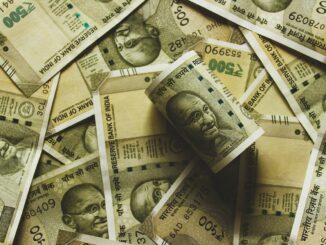
மகாத்மா காந்தி பேச்சு போட்டி கட்டுரை
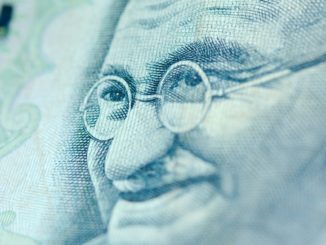
காந்தியின் அகிம்சை கட்டுரை
All Copyright © Reserved By Tamil Katturai 2023
- Editor’s Picks
Mahatma Gandhi in Tamil Literature
Tamils played a major role in the life of Gandhi, starting with the satyagraha in South Africa. Vincent Lawrence, working as his clerk, was one of the first residents with Gandhi at Durban. A Christian Tamil, he was from an ‘untouchable’ caste. The friction with Kasturba on account of Lawrence opened up Gandhi’s mind to the issue of untouchability. The episode of Balasundaram made Gandhi turn his attention towards the plight of poor indentured Indians too. Thambi Naidoo, another Tamil, was one of his staunchest associates. The Tamil teenagers, Valliammal and Nagappan, died during the satyagraha and became a great source of inspiration. Gandhi’s first magazine, the Indian Opinion, was initially published in four languages, Tamil being one of them. Gandhi learnt a bit of Tamil and even taught Tamil to the ashram children. In India, Gandhi received good support from Chennai for his South African cause. The Hindu and the Madras Standard gave him good coverage when he visited India in 1896 to campaign for the South African Indian cause. G.A.Natesan was one of his earliest publishers and anthologists. Rajagopalachari became his close associate, friend, his son’s father-in-law and his conscience-keeper. Many Tamils were part of his ashrams in South Africa and India. Gandhi made many key decisions when he was in Tamil Nadu. He visited Tamil Nadu 20 times; the first visit was in 1896 and the last in 1946. After he gained renown as the Mahatma, he drew huge crowds in Tamil Nadu wherever he went. He was also shown black flags to protect his movement against untouchability. The sanatanist Tamils found him to be too progressive and the Dravidian movement blamed him for being too conservative.

It is, therefore, no wonder that there are extensive writings about Gandhi and the Gandhian movement in Tamil, starting with Subramanya Bharathi, the preeminent Tamil poet and the pioneering prose writer of the twentieth century. Bharathi, battling poverty and the British rule, while in exile in the French territory of Pondicherry, has written about Gandhi’s movement, right from his days in South Africa, in his journals such as Vijaya. Even then, he called Gandhi a ‘Mahaan’, a precursor to his later title, the Mahatma.
This anthology was put together in Tamil by Dr.Suneel Krishnan, himself a promising young writer in Tamil. In a way, this anthology was a result of his many years of work in curating the Tamil website, Gandhi Today, where writings of Gandhi and about Gandhi, were collected and translated by him and other contributors. In this anthology, Suneel Krishnan has collated works from various writers, belonging to different time periods and ideologies, and straddling across different genres in fiction, non-fiction and poetry. Many of them are adulatory but there are some critical pieces too.
Gandhi has featured in the writings of some of the greatest writers of modern Tamil literature. Short stories or extracts from novels of Pudhumaipithan, Ashokamitran, T.Janakiraman and Jeyamohan, towering figures in the world of Tamil fiction, are featured here. As for the poets, Bharathi, Bharathidasan and Kannadasan are among the prominent poets who have written traditional poems (which followed traditional prosody, verse structures and rhyme patterns) on Gandhi. C.S.Chellappa, Gnanakoothan, Devadevan, Manushyaputhiran and Sirpi are significant Tamil poets whose modern poems (which were typically in the form of free verse) find a place in this anthology. Poems from promising young poets like Isai and Sabarinathan are also included.
In the poems, the focus of the traditional poems has been on non-violence and the endearing personality of Gandhi, while many of the modern poems focus on the Gandhi who is difficult to follow or has been tragically ignored and killed.
Bharathi did not live to see the outcome of the non-cooperation movement of Gandhi in India, as he died young in 1921. But he predicted in his poetry,
‘The most beneficial non-cooperation – Through this path what will transpire In India, shall inspire the world to abjure Acts of hostility, and prosper through morality.’
Bharathi’s first line of this poem, ‘Long live, my father’, is the line quoted most often by other writers in this anthology.
Namakkal Kavignar’s lines on non-violence defined it wonderfully well, and became the anthem of the Gandhian movement in Tamil Nadu.
‘With no blade, and no blood, Comes a battle! We plead, Join us, those who hold fast Truth shall forever last.’
Raya Chokalingam, in whose house Gandhi had once stayed, wrote an unusual poem with two counter voices – one praising Gandhi and the other raising doubts about him. Says the doubter:
‘In praising this lord, what is there to gain! Do you not know, world by nature is vain! My friend, in singing his name, there’ll be pain!’
The young girl of the poem goes on to say,
Go, silly girl! how will we bear khaddar? Flowers tire us! It’s an illusion, I gather! Hey, my friend! If our waists break, who’ll bother?
The rationalist poet Bharathidasan, wrote, “The sage is dead but is all over born/ He gave the world all that can be given.” The premier lyricist of Tamil movies, Kannadasan, termed Gandhi Centenary as ‘Shanti Centenary’. Ki.Va.Jagannathan, calls Gandhi as ‘The sage who tamed his mind, can his worth be sized?’ and ‘Out of molten wax, iron he could form.’
Gnanakoothan writes a satirical poem to bring out the hypocrisy of an orator using Bharathi’s lines on Gandhi. Isai writes a playful, delicious, short poem titled Gandhism on the challenge of conquering one’s senses.
‘With a tantalising smell It makes one drool… Conquering the world can wait, First Conquer this urad vada . ‘
Progressing along a similar theme, Shankar Ramasubramanian, says, ‘It is a mere kitchen knife/ But when I hold it/ It invites me for/ Medieval/ Battles and heroics;’ Another young poet, Sabarinathan, ponders about the ‘children not blessed by Gandhi’. The grandfather in the poem laments about how he narrowly missed seeing Gandhi at the railway station, and ‘Thus have everyone joined/ To ruin the nation.’
Devadevan portrays two scenes – first a blissful but melancholic picture of Buddha, Christ and Gandhi together and then a bleak picture with them in a helpless state. Kumari S.Neelakandan and C.S. Chellappa lament the death of the Mahatma and the ritualistic remembrance of him, forgetting the real Mahatma. “Your woeful murder is a symbol/ Of berserk animal instinct./ Your woeful murder/ Raises the fear/ That from this world/ Virtue will wither,” fears Chellapa. Chellappa, as noted by Venkat Swaminathan in a later essay, was a Gandhian who went to prison, and lived by the Gandhian ideals through his life. When he visited Delhi, Birla Mandir, where Gandhi was shot down, was the only place he wanted to see.
Ramesh Predan writes about the killing of Godse:
‘You killed him who killed me Now, he and I – are we not on the same plane?’
Ramesh Predan’s Gandhi further says, ‘Your killing him/ Killed me yet again.’
Manushyaputhiran talks about a Gandhi who refuses to be pushed out; who still demands goat’s milk instead of coke; who doesn’t understand ‘it’s because of this stubbornness/ That he already once/ Gave his life’; who eats meat to protest, ‘when he saw people flayed/ For having eaten meat’; who is ‘biding his time’; and who is asking for ‘a mechanic to repair/ This faulty charka’.
The short stories in this collection are noteworthy both for their literary merit and the Gandhian flavour they possess. Gandhi appears briefly in person or is the central theme in these short stories (as in the novels). Some of them should make it to any anthology of short stories purely on the strength of their literary value.
Pudhumaipithan’s The New Nandan is one such short story. It seems at first to be a simple, early short story about social reformation. On deeper reading, it reveals many layers weaved in intricately. In today’s charged social atmosphere when Gandhi is pitted against Periyar/Ambedkar, this story seems as relevant today as it must have been in 1934 when it was written. It accentuates the point where they converge despite all the differences.
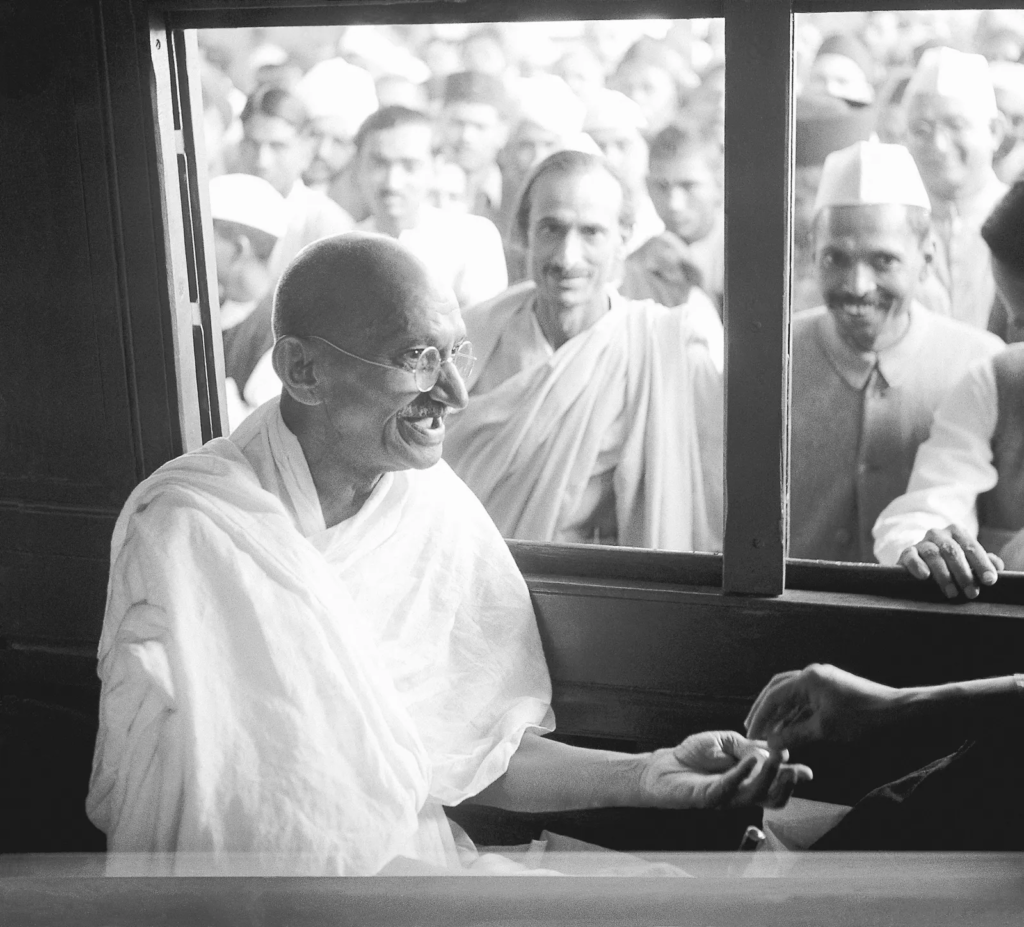
A strong authorial voice is heard throughout the story. Early in the story, the author says, “However, after Nandan took leave of the Pariahs’ colony, the Pariahs’ colony did not find salvation. It remained the old Pariahs’ colony. With the old toddy shop.” Individual salvation had not led to the liberation of the society. They were in a deep slumber, oblivious to the developments outside, even to the onset of the British rule.
As a token of the British rule, the municipal lights arrive at the village. But they also remain at a distance from the colony to maintain untouchability. Nandan of the old never felt he was enslaved by his landlord. So is Karuppan. He continues to serve his master, who had blinded him when he was young for drinking water from the common well. He didn’t drink the water as an act of defiance but merely out of ignorance. The story also portrays the transformation of land-owning upper castes into British Indian bureaucrats. Their next generation, inspired by Gandhi, shun the bureaucracy and their own social privileges. Ramanathan, the son of the old landlord and sub-registrar gives up his potential future as a Collector to take part in Salt Satyagraha and the Harijan movement. He even goes to jail.
Though Karuppan is faithful to his master, he yields to the temptation of making his son an English-speaking master. He sends his son with John ‘Iyer’, a Christian evangelist. John Iyer is originally from a land-owning Velala caste, and though changed his religion, he had not given up his caste privilege. When Karuppan’s son, Pavaadai, re-christened as Daniel, proposes to marry John Iyer’s daughter, he abuses him by his caste name and throws him out. Daniel has a brief stint of training to be a Catholic priest but is disillusioned there as well and eventually joins the Self-respect movement of Periyar. He becomes Comrade Narasingam.
His father Karuppan, who wanted him to become a master, refuses to let the master’s Gandhian son, Ramanathan, marry his daughter, when he offers to. His wish to see his children progress is suppressed by his caste conditioning. Comrade Narasingam cannot also break this conditioning.
Ramanathan invites Gandhi, who is on a tour to Tamil Nadu on a Harijan yatra, to visit his village. Both his sanatanist father and the Periyarist Narasingam are keenly awaiting his arrival to debate with him and win.
Ramanathan and Narasingan arrive at the same truth through two different paths. They look at the same light in different ways. Finally, the author might be implying that Karuppan also might have seen the same light in another way. In truth, this is a light seen in three different ways by all three of them.
Pudumai Pithan belonged to the Manikodi era of Tamil short stories in the 1930s, when the magazine Manikodi became the platform from which the giant leaps were made in modern Tamil short story. Pudumai Pithan is widely considered to be the preeminent among the Manikodi writers, and possibly, those who followed them as well. The next author in the anthology, B.S.Ramaiah was a pillar of the Manikodi era. Like Chellappa, he too was a devoted Gandhian who went to prison during Salt Satyagraha. His short story, ‘A grain of rice’, has as its protagonist, Kumudham, who as a young girl gave away her jewels to Gandhi in exchange for his signature and made a promise to him never to wear jewels. She keeps her vow even after she grows up. The story is about the challenges posed by her vow and how she surmounts them through her unwavering adherence to the Gandhian values. S.Ambujammal, in an essay, which comes later in the anthology, also talks about such an incident, when Gandhi asks for jewels from a young girl while staying at her father Srinivasa Iyengar’s house. In the book, ‘This was Bapu’, R.K.Prabhu narrates an anecdote involving Dr.Nirupama of Udupi, who as a nine-year old girl gave away her ornaments to Gandhi. Gandhi further extracted a promise from her ‘that she would not wear any ornaments on her person in future’. She kept her promise till the end. Gandhi was a tireless beggar and a ruthless bandit when it came to lovingly cajoling young girls to give away their jewels for social causes. B.S.Ramaiah explores the untold practical difficulties that the Ambujammals and Nirupamas would have faced in real life through the fictional travails of Kumudham, ‘a grain of rice stuck in the fingers of time.’ She further elucidates that her husband and others are from “the caste created and left behind by the whiteman. I belong to the new Bharat caste that the Mahatma started to make. The two are struggling to commingle in the first blending.” Thankfully for her, she had forged her little son, Babu, in the mould of the new caste.
The next story, ‘Within and Without’, by R.Choodamani, captures the progress made by three young men who were fired by the Gandhian spirit during their college days in the 1940s, when they met again in the 1960s. Choodamani shows for a major part of the story how Muthu and Ramanan, who meet first at a restaurant, have clearly lost the Gandhian spirit in pursuit of material goals even as they have made a grand external show of the regard they profess for Gandhi. When they go to meet the third friend Gopi, they see him leading a poor life but, in a moving ending to the story, realize he has kept his idealism intact. The story metaphorically presents India in the first decades after the death of Gandhi and the glimmer of hope that remained yet.
Ashokamitran’s short story, Gandhi, is a simple story narrated in an intricate and complex structure. The first-person narrator of the story is pondering over his strained relationship with a friend, who has been spreading lies about him. The unnamed friend is introduced as someone who could weep at a simple everyday sight in a natural setting, relating it to the sorrow of the human race. They have a fallout and he wonders ‘if this rancour arose between him and his friend because of Gandhi.’ The story takes a dialectical approach to understanding Gandhi. The narrator looks at Gandhi as ‘an extraordinary being who had impossible beliefs and expectations.’ His friend launches a vitriolic diatribe against Gandhi. Juxtaposed against the dialogue on Gandhi is the allegorical tale of the friends and the intense personal exploration of the narrator based on his mundane experiences at the eatery.
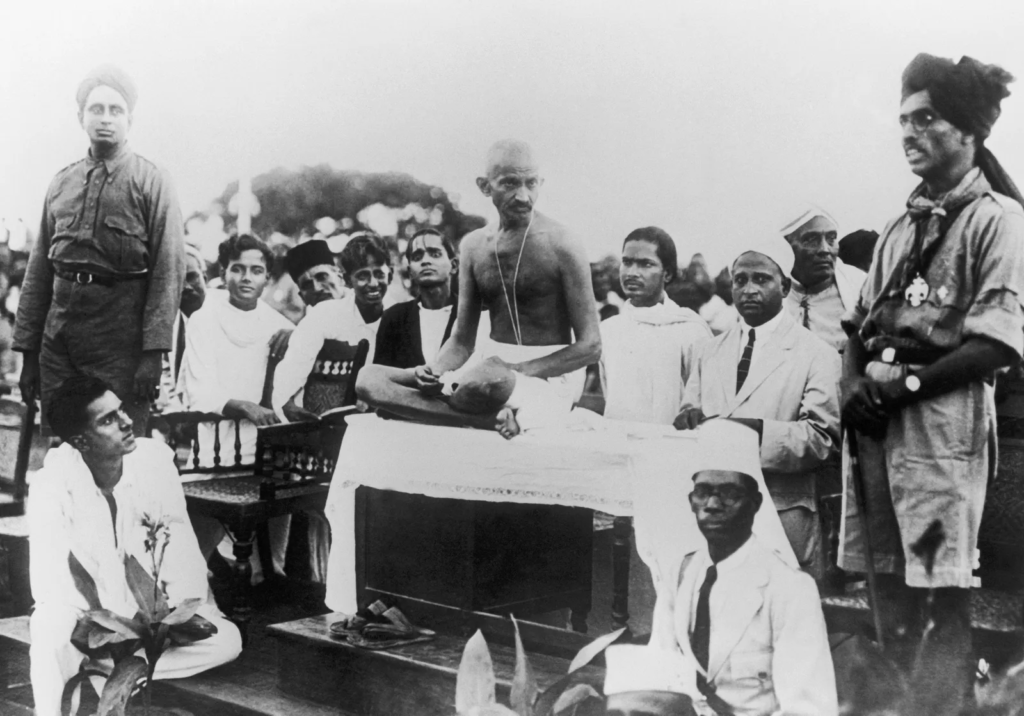
Another remarkable short story is ‘Water and Fire’ by Jeyamohan. He is a prolific writer who is at ease while creating modern classics as well as reimagining ancient classics like Mahabharatha and Chilapathikaram. He has written extensively on Gandhi and should be credited with kindling a new wave of interest in Gandhi among many youngsters. ‘Water and Fire’ is a story directly involving Gandhi, set during his years at the Satyagraha Ashram at Sabarmati. Gandhi falls seriously ill and he is ready to face death. A Bairagi – an ascetic, visits him and offers to treat him. He terms his method as the way of fire; he would cure through mantras on fire and a diet of food items favoured by fire. He rouses Gandhi’s desire to live and to desserve the starving millions. But when he returns the next day he sees Gandhi doing the exact opposite of what he intended to do. “My way is the way of water,” says Gandhi. This is another allegorical story which can be interpreted to mean how Gandhi chose non-violence over violence, and compassion over aggression.
In Suneel Krishnan’s short story, ‘Crescendo’, Gandhi is led to heaven after his death. But he refuses to go to heaven, where people lived in luxury and joy, and insists on being taken to hell, where people are suffering. “I do not want such a degenerate heaven. I did not live to reach heaven. Further there is nothing for me to do there. All these years when I strained myself, was it to live a concealed and unrestrained life?” he asks. This story reflects what Gandhi said to Manu Gandhi in June 1947, “People now ask me to retire to Kashi or go to the Himalayas. I laugh and tell them that the Himalayas of my penance are where there is misery to be alleviated, oppression to be relieved.”
In S.Ramakrishnan’s ‘I shall meet Gandhi’, a young woman in an unhappy marriage runs away to Gandhi’s ashram at Sevagram. She finds peace there but her husband comes there to forcibly take her back. Gandhi is unable to intervene. Later she visits her grown up son and his wife in London. She visits places visited by Gandhi. Her son discovers Gandhi through his mother’s story, and he undertakes a trip to Sevagram. His Jewish wife helps him interpret Gandhi.
C.Saravanakarthikeyan’s ‘The Fourth Bullet’ is a racy story about a young journalist who travels to Delhi based on a lead that there was a fourth bullet shot during Gandhi’s assassination. Gandhi’s last day and his assassination is reconstructed through her journey and interviews, and by interposing the actual events of the last day between her interviews.
Nakul Vasan, in his ‘Ecce Homo’, traces the life of a young Mohandas studying to become a barrister in London.
Devibharathi’s novella, ‘Farewell, Mahatma’, recalls the journey of Tolstoy from his home at Yasnaya Polyana to Astapovo, where he died at the railway station. Gandhi, in this novella, is exasperated by the riots after partition and the changes in his associates. He goes out seeking his own Astapovo. He mingles in the crowd consisting of many people dressed as the Mahatma. Yet he stands out because he is the only one who buys a ticket and is detected by a station master. He convinces him to return to Delhi. Devibharathi portrays the immediate decadence of the Indian society after independence and the despondence that befalls Gandhi. But Gandhi’s struggles are all inside his mind. Unlike Tolstoy, he doesn’t walk away from his life and troubles. He stays to fight. He presented his death as a message to our lives.
Each chapter from the novels chosen in this anthology reads like an independent short story featuring Gandhi and brings out important facets of Gandhi.
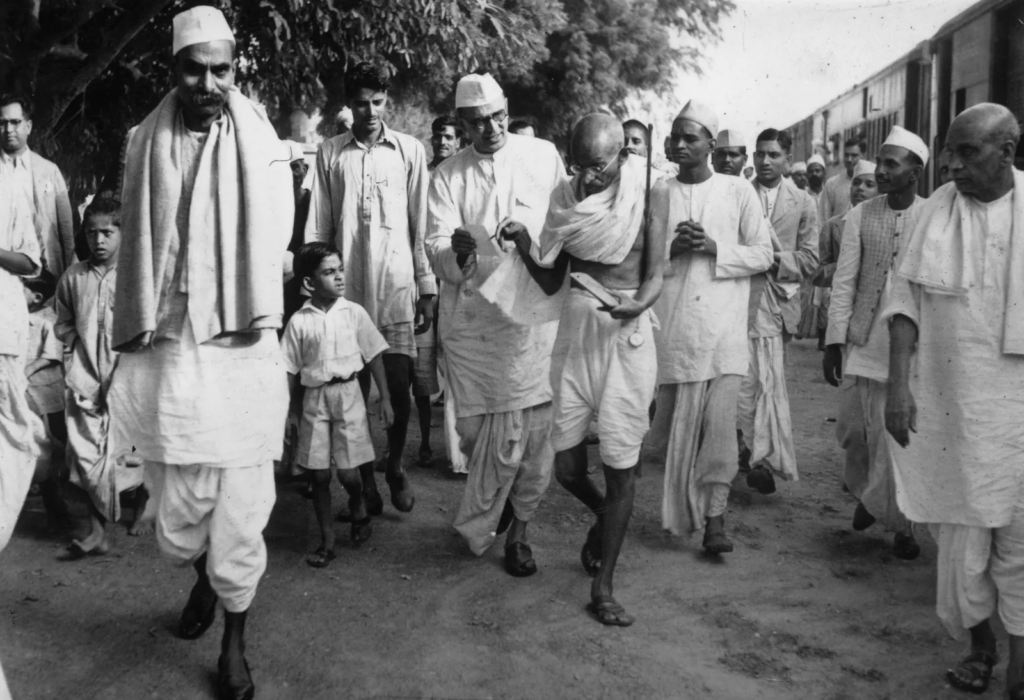
Thi.Janakiraman and Ashokamitran have written about the reactions of the protagonists of their respective novels, The Thorn of Lust and Eighteenth Parallel, to the news of Gandhi’s assassination. In their contrasting styles, they capture the sense of extreme desolation felt by the Tamil youth at that time. The palpable pain of losing the father of the nation is recorded by others in the Tributes to Gandhi included in this work. It is best encapsulated by the reaction of Periyar E.V.Ramasamy, often a harsh critic of Gandhi, who wanted to rename India as Gandhi Desam or Gandhistan, and the Hindu religion as the Gandhi religion or Gandhianism.
In the chapter from the novel Twenty Years, M.S.Kalyanasundaram etches moving portrayals of simple people inspired by Gandhi to render remarkable service in their everyday life and make joyous sacrifices when called for.
‘The Skies are Seen on the Earth’ by N. Chidambara Subramanian is another novel that epitomizes the Gandhian spirit of that era. The scholarly protagonist of the novel, who gives up prospects of a promising career, gets an opportunity to spend time with Gandhi. The chosen chapter depicts his encounter with Gandhi and his associates. It gives a taste of the endless conversations that Gandhi had with the converts and critics alike on non-violence and truth.
The chapter ‘The Thin yarn’ from Jeyamohan’s novel, ‘The voice of the trailing shadow’, is a complete short story by itself. It reimagines a meeting said to have occurred between Gandhi and Ayyankali, the renowned Dalit leader of Kerala, in 1922. Gandhi is shown to have won over Ayyankali to the path of non-violence but is himself beset by self-doubts.
In the novel ‘August 15’, Kumari S. Neelakantan narrates the encounter of M.S.Subbulakshmi with Gandhi. The novel is a fictionalised account of the conversations with V. Kalyanam, who was an aide to Gandhi in his last days. This chapter is also based on real events as can be seen in the essay, ‘Her Hymn’, by Samanth Subramanian in Live Mint [ 29 Jan 2009].
C. Saravanakarthikeyan [Before the Apple] endeavors to tread on the complex and controversial phase of Gandhi’s life, when he undertook brahmacharya experiments during the strenuous Noakhali yatra.
In Maalan’s ‘Jana Gana Mana’, Sardar Patel and a police officer try in vain to convince Gandhi to accept security.
In P.A.Krishnan’s ‘The Muddy River’, a ninety-three year old father visits his son in New Delhi and has nostalgic conversations with him on Gandhi.
In the play ‘The Flame of Sacrifice’ by M.P. Gurusamy, Gandhi and Kasturba clash over clearing the chamberpot of an untouchable associate. The stern resistance shown by Kasturba sows the seeds of satyagraha in Gandhi.
Subramaniya Siva, a contemporary of Bharathi and V.O.Chidambaram, imagines a meeting between Balgangadhar Tilak on his deathbed and Gandhi, when Tilak hands over the baton of leadership to Gandhi.
There is a section on Children’s Literature, where some delectable songs on Gandhi for children by Suddhananda Bharathi and Azha Valliappa are chosen. Kothamangalam Subbu tells the unusual tale of the meeting between Tan Yun-Shan, a Chinese scholar, and Gandhi, and the exchange of letters between Gandhi and the Dalai Lama, transcending languages. Thi.Ja.Ra gives a short history of the Salt Satyagraha.
The essays in this anthology have been classified into six sections: argumentative essays, expository essays, slices from Gandhi’s life, reviews of movies on Gandhi, reminiscences about Gandhi and tributes.
The essays are representative of the various schools of thought in Tamil Nadu, some of which I am seeking to underline in this introduction.
Subramaniya Bharathi’s writings can be seen to echo the voice of the generation of Tamils who fought alongside Tilak before the advent of Gandhi in India. In the two essays produced here, he is welcoming, optimistic and also cautious. “I do not endorse the principle that we cannot get Swaraj till the time there are inequities in our social life. But, ‘we reap what we sow.’ As long as there is mutual injustice amongst us, there won’t be peace in the nation. We have to suffer in many ways,” he wrote when Gandhi said they could attain Swaraj in nine months but ‘Unless the Hindus remove the sin of regarding some castes as untouchables, Swaraj will not come in one year; not in a hundred years.’
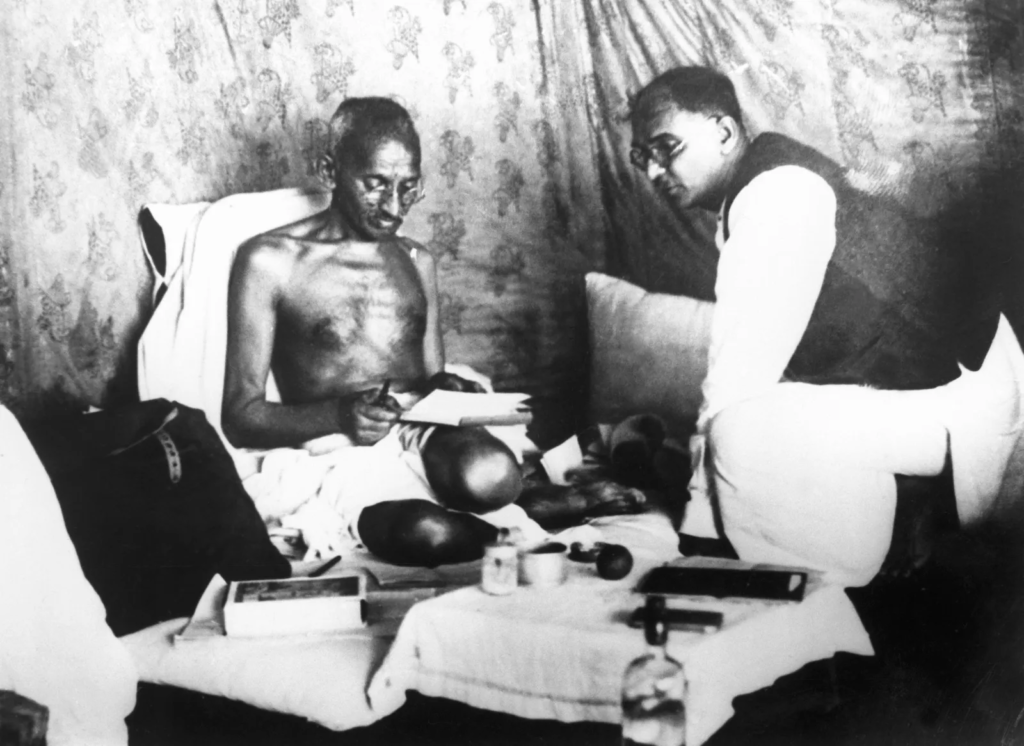
In another essay, Bharathi evaluates the eleven vows of Gandhi. While he accepts most of them, he is caustic about two.
“If the rich take up control of the palate and brahmacharya, it is good for them. This advice is not needed for the poor. Their palates are already tied. Gandhi hasn’t prescribed brahmacharya as a dharma for everyone. If it works, then the nation will soon be bereft of people.
“Gandhi has talked about eleven vows. I will give the twelfth vow. It is: spare no efforts to seek wealth; achieve a high standing in the world; The entire nation should undertake this twelfth vow.”
Periyar and Annadurai approach Gandhi through the eyes of the Dravidian movement. Periyar alternated between extreme adulation and strident criticism of Gandhi. The essay by Thirumavelan tries to explain this dichotomy through the words of Periyar: “The Gandhiji who lived, was the Aryan Gandhiji, the Gandhiji created by Aryans, the Gandhiji of our enemies. But, the dead Gandhiji is our Gandhiji, the assassinated Gandhiji who was killed by the Aryans fearing the demise of Aryanism. Therefore, I declare that, more than others, we have the right to grieve his death.” Annadurai saw Gandhi as a global elder. He said, unlike other independence movements in history, Gandhi had to fight for freedom as well as a new social order.
Piramil, a major poet who was born in Srilanka and later migrated to Tamil Nadu, writes about the early attempts at Satyagraha in Srilanka which were aborted after a few failures. He says a practitioner of ahimsa has to be unflinching in the face of dire circumstances. “An ahimsa warrior stands forever facing death. Death is neither civilised nor uncivilised. Real ahimsa lies in not even abusing those who cause death and pain.”
Kovai Gnani, a veteran leftist thinker, presents a detailed critique of Gandhi from a Marxist perspective. He points out the defects of Gandhism as seen by Marxists as well as the shortcomings of the Marxist approach of assessing Gandhi. He posits that Gandhism cannot be revived but Marxism needs to learn from Gandhism.
Sundara Ramasamy, an important voice in modern Tamil literature, calls for a reassessment of Gandhi without seeing him through the prism of any ideology. He is critical of Gandhi’s ideas on brahmacharya, relationship of vegetarian food to spirituality and trusteeship but thinks anyone with a real concern about the contemporary issues of life would take a serious interest in Gandhi.
Jeyamohan wants us to look at Gandhi, not as a Mahatma, but as a pragmatic political thinker. He analyzes Gandhi’s reasons for promoting Hindi as the link language for his conception of a decentralized India, and conjectures that he would have opposed Hindi as the official language of the centralized India that has transpired now. He says, “Gandhi’s gram swaraj was, unlike what Nehru thought of it, not a retrograde dea. There is a map in it for a postmodern society.”
Prem presents a post-modern portrayal of Gandhi. He feels the seeming simplicity of Gandhism masks its complex internal workings. “In the postcolonial, postmodern, ecological, feminist political arena, the metaphorical understanding advanced by the spiritual politics of Gandhi is considered to be most meaningful,” writes Prem. He establishes why Gandhi is relevant and important for the green politics emerging today. He also identifies the harmonious way of community living as an important aspect of Gandhism that needs to be studied.
A. Marx assesses Gandhi through the reactions of the sanatanists in Tamil Nadu. He asserts that the sanatanists and the Hindutvites are the foremost foes of Gandhi. “Though he spoke highly of Hinduism and varnashrama, on the other side he kept deconstructing its fundamentals,” writes A.Marx. He also elucidates Gandhi’s progressive views on caste and women through his support for widow remarriage, inter-caste marriages, abolishing the Devadasi system and his opposition to child marriage.
Natbas tries to understand the circumstances that led Gandhi to undertake the brahmacharya experiments with Manu in Noakhali. He concludes, ‘by forcing him to purify himself in a great fire, it was the moment when the pettiness of the common people reared its head and raged, the moment of fall for India.’
Aravindan Kannaiyan counters the criticism and slanders on Gandhi that he hobnobbed with the rich and stayed at palaces. He cites instances of his stay in the Bhangi Colony in New Delhi, the dilapidated mansion of Hydari Manzil at Kolkata, ordinary quarters in the poor areas of East-end in England, and a hut in Karadi, a village near Dandi. More importantly he highlights the impact he made from wherever he stayed.
The young Gandhian writer, V.Vishnu, tries to understand why there are so many who hate Gandhi.
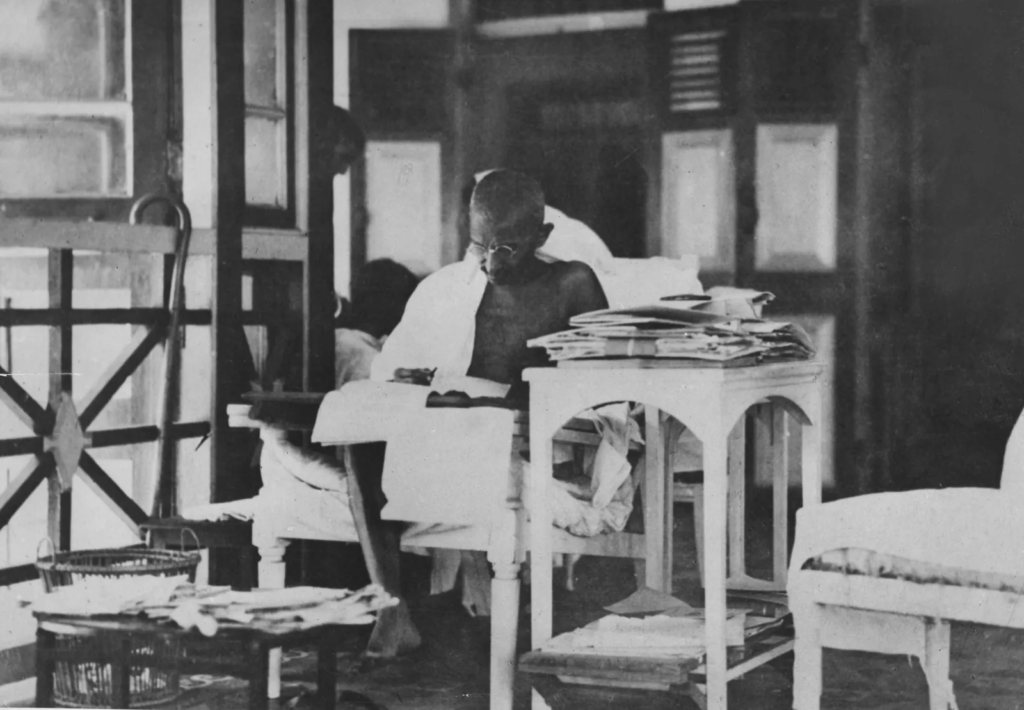
Samas, a prominent Tamil journalist, recounts the tale of Champaran Satyagraha. He says, ‘It was not only the first satyagraha movement conducted by Gandhi after he returned to India from South Africa in 1915, but also an eternal model for a true satyagraha.’
Balasubramanian Ponraj terms Gandhi’s death as a more marvellous message than his life.
Aasai calls Gandhi India’s wi-fi, as he linked the whole of India to his experiments.
Sarvotaman proposes that Gandhi attempted to make a man outside the binary system of capitalism and communism. He considers Gandhi’s most important domain today to be alternative economics because nobody else has said what he said.
‘Raattai’ Ragunathan, a knowledgeable and persuasive Gandhian voice on social media, writes about Gandhi’s real attitude towards caste and untouchability. He writes about how he risked the closure of his ashram at Kochrab for accommodating Dalits there. He also mentions the admission of the family of Dhudhabhai, belonging to a scheduled caste. Gandhi and Kasturba adopted their infant daughter, Lakshmi. Lakshmi was later married off to a Tamil Brahmin. He further writes about how Gandhi stopped conducting same-caste marriages in his ashrams from 1927 onwards.
Thiru.Vi.Ka., a Tamil scholar and a participant in the independence movement, delves on incidents in Gandhi’s life where the applicatication of ahimsa was contested by friends and critics. He absolves Gandhi on some and finds some of them doubtful. “Motive has to be placed higher than external action. It is not possible for anyone to perform anything that is acceptable to everyone,” he concludes.
V.Swaminatha Sarma draws comparison between Gandhi and Swami Vivekanda, seeing both of them as two significant forces which gave rise to two movements. Na.Parthasarathy, a Sahitya Academy Award winner, considers Gandhi to be the only person in recent times who left behind an original philosophy and true ideological capital. Akilan, a Jnanpith Awardee, believes that Gandhi’s ‘unwavering faith in God, his attempts to realize God and the deep devotion he showed to God gave him such a magnificent power,’ and made him the father of the nation.
Ma.Po.Sivagnanam, another Tamil scholar and an active contributor to the independence struggle and other social movements, traces the history of the demand for prohibition of alcohol becoming a part of the independence struggle. He deduces that only after the British rule, alcohol became a source of revenue for the government. Gandhi refused to include suspension of the picketing of liquor shops as part of the Gandhi-Irwin pact.
A.K.Perumal, a respected folklorist, takes up folk songs on Gandhi as the subject for his essay. Folk songs on Gandhi had been composed in Tamil from the time he arrived in India. The author also narrates an interesting incident when a highly educated freedom fighter asked Gandhi, “Why shouldn’t you give a press release formally proclaiming yourself to be an incarnation of God?” Gandhi told him with a smile to shut up and sit quietly.
In an essay written by me, I explore the relationship between the Tamil classic, Thirukkural, and Gandhi.
Paavannan, an acclaimed writer and translator, gives an account of the strategies and meticulous planning that went into the Salt Satyagraha led by Gandhi towards Dandi and Rajaji towards Vedaranyam. He compares it with the contemporary protests where damage to property has become the norm.
Suneel Krishnan reviews the personal biography of Gandhi by Milie Polak: Gandhi, The Man. He considers it to be one of the most important books on Gandhi. Milie Polak relates her personal experiences with Gandhi in this book. ‘They discuss about pregnancy, sex education, man vs. wild, religious conversion, the condition of women in the East and the West, spirituality and many more.’ Suneel identifies some of the key moments in the book and avers there is enough material in it to give rise to many works of literature.
Kalki, one of the most popular writers in Tamil, portrays the events that led to Gandhi deciding to wear only his loincloth.
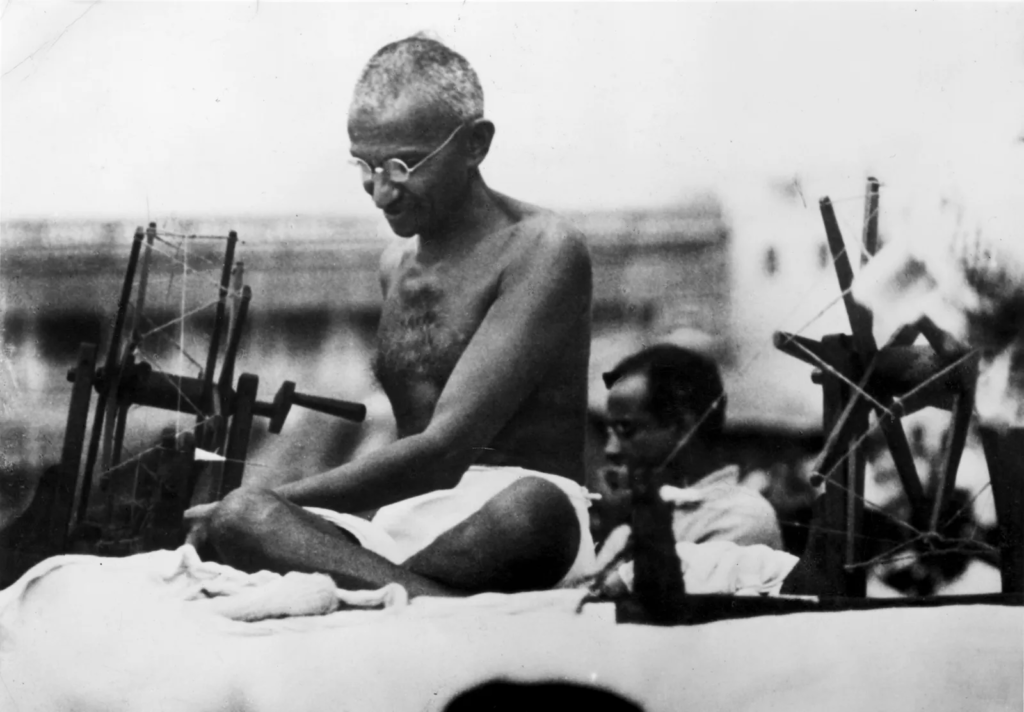
The excerpt from the seminal work of A.Ramasamy, Gandhi in Tamil Nadu, covers the tumultuous meeting at Madurai where Gandhi sat on a satyagraha to disperse the unruly crowd and some members of the crowd launched a counter-satyagraha to get a glimpse of Gandhi.
Gokul Prasad, a prolific young movie critic, reviews the movie, The Making of the Mahatma, and observes that Benegal’s Gandhi possesses all the desires and disappointments of a common man. Sujata, known for wit and brevity, lists down ten aspects he liked about Richard Attenborough’s Gandhi. S.Ramakrishnan reviews a lesser known movie, Road to Sangam, which explores the relevance of Gandhi in a contemporary atmosphere teeming with religious riots.
The Reminiscences section presents an impressive array of personal encounters with Gandhi and his associates.
Chinna Annamalai was introduced to Gandhi by Rajaji as ‘the first person to have been rescued openly from a jail in the British Empire at noon by people who broke the prison walls down.’ Though only a brief mention is made in this anthology, his story of jailbreaking is an unbelievable account, which has escaped the pages of history. He went on to edit Tamil Harijan.
A.K.Chettiar outlines his experience of shooting his documentary on Gandhi at Sevagram. He paints short, vivid sketches of the associates of Gandhi but he did not venture to personally meet Gandhi because he feared that Gandhi might decline permission to make the documentary!
Harihara Sarma, a friend of Bharathi and an erstwhile armed revolutionary, transformed and joined Gandhi’s first ashram in India at Kochrab. He brings out the humanity and personal care of Gandhi while running the ashrams amidst various challenges.
Ambujammal shares a conversation with Gandhi on Catherine Mayo’s book, Mother India, when he was reading it before writing of it as a ‘Drain inspector’s report’. He spurs her to take up social work to remove the lacunae pointed out by Mayo.
Periasamy Thooran and R.K.Shanmugam Chettiar narrate their experiences of hosting Gandhi when he stayed with them at Coimbatore on different occasions. Shanmugam Chettiar mentions how Gandhi took up the cause of a street vendor selling oil, whose oil cans were carelessly knocked down by a policeman. He witnessed this during his morning walk, took it up with a senior officer and made sure the police apologized to the poor vendor and compensated him for the loss.
T.R.Arunachalam was witness to the meeting between Gandhi and Alagappa Chettiar, who had leprosy. He opines that when Gandhi embraced him, Alagappa Chettiar was so moved that he became a lifelong philanthropist.
T.S.S.Rajan wrote a brilliant book on Gandhi’s tour of Tamil Nadu in 1934, which he coordinated. In the chapter extracted here he narrates three contrasting incidents: an astrologer who insists on reading the palm of Gandhi is turned away stubbornly by Gandhi; despite Gandhi delivering his best speech on untouchability, the Naattars of Devakottai were unmoved; ‘Gandhi Hotel’ Iyer of Salem managed to convince Gandhi to visit his hotel, where no caste barriers were observed, but Gandhi couldn’t enter the hotel due to the unmanageable crowds on the road. Gandhi Iyer went to Gandhi’s car to garland him and donate to the Harijan Fund.
Saavi, a Tamil journalist, travels all the way to Noakhali to report on Gandhi’s movement there. He knew neither Hindi nor Bengali. Gandhi tells him he could have donated the travel expense to Harijan Fund and sends him back.
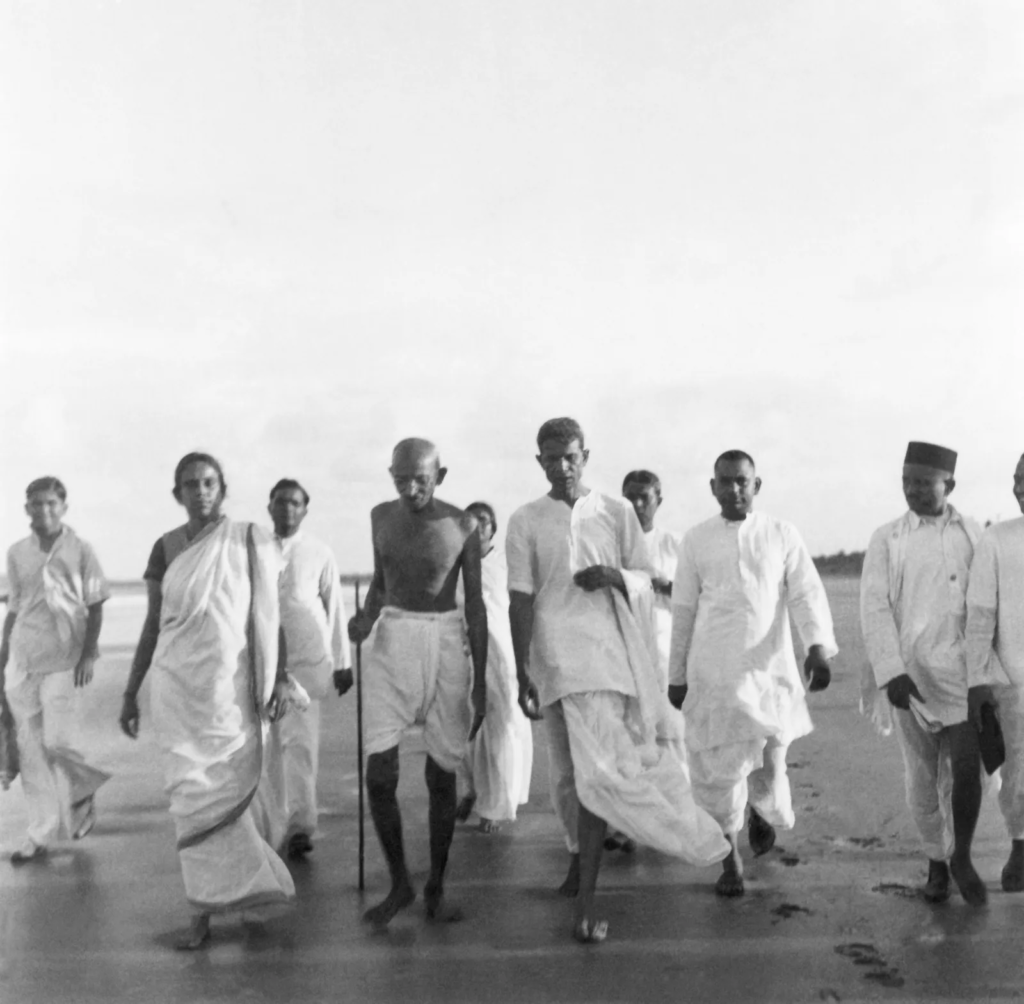
Avinashilingam Chettiar recollects how he was stunned to see Gandhi wading through muddy water in pouring rain for many kilometres to visit a worker at Maganwadi who had fallen sick.
Namakkal Kavignar sketches out the stormy meeting he had with Rajaji and Gandhi, when Rajaji changed Gandhi’s tour plans due to other contingencies and dropped his visit to Karur and Gobi. Gandhi decided to sacrifice the days earmarked for rest and honour the prior commitments.
Venkat Saminathan remembers his experience as a young school boy, travelling for five miles along with a sea of people from his village to catch a glimpse of Gandhi at Kodai Road on the way to Madurai.
Finally, A.Muthulingam shares a humorous account of his conversations during school days with a friend who had photos of Gandhi and a postcard from him. Both Gandhi and Mahadev Desai had written congratulatory notes to the friend’s parents before their wedding, on the same postcard to save money.
This anthology is fairly representative of the writings about Gandhi in Tamil but can be by no means exhaustive. While some amount of criticism is included here, there is a vast amount of criticism which has been left out. Gandhi has his share of critics in the Tamil world, from the right wing Hindutva writers, the leftists, the Dalits and the Dravidian movement. There is also no dearth of baseless vitriol poured on Gandhi. A few essays in the anthology are a response to those criticisms, and in some cases, slanders.
One of the key flaws in this anthology is the inability to identify the exact dates of each work. Many of them have been sourced from other anthologies, which also fail to mention the dates. Wherever possible, the dates are given. Also, there are only three women writers included in the anthology – Asalambikai, Choodamani and S.Ambujammal.
Translating the anthology was a great pleasure and a great challenge. There were a myriad of voices, which found unique expression in Tamil. There are popular writers, who wrote in large magazines in the simplest of languages to appeal to the popular audience, and there are serious literary writers, who wrote in a relatively complex style in little magazines for a small group of literary enthusiasts. There are those like Thiru.Vi.Ka. who employed a highly classical form of Tamil in prose and those like Annadurai who used a lot of rhetoric and rhyme in prose. Though I may not always have been successful, I have taken utmost care to, by and large, stick to the spirit, style and structure of the writings in Tamil, so that the distinct tone and style of the different voices can be felt in English too. A number of quotations by Gandhi were quoted in the Tamil works, often without citing the source. In most cases, I have traced the English source and reproduced the quotations from there. The references are given in the translator’s notes under each work.
I owe my gratitude to Suneel Krishnan for entrusting me with the translation of this important work, and to Bharatiya Vidya Bhavan for publishing it.
Senthil Kumar (Quiz Senthil) helped with proofreading the first few parts of the book, offering valuable suggestions.
Paavannan gave me the initial thrust and confidence to complete this work after reading the translation of his essays. S. Ramakrishnan also wrote words of encouragement after reading the translation of his works.
N. Kalyanaraman gave his permission to include his translation of Devibharathi’s novella, Farewell, Mahatma, in full. A chapter from P.A.Krishnan’s novel, The Muddy River, is taken from his original English novel. Nakul Vasan, the author of the short story, Ecce Homo, has translated it into English himself.
It is Gandhi, who inspired our little family to move to a village and almost the whole of this translation was done in the village. I would not have been able to complete the work if my wife, Nedya, had not taken on the complete responsibility of looking after our farm during the long periods when I was immersed in this work.
Mahatma Gandhi in Tamil literature , An Anthology of Writings on Gandhi in Tamil Literature, Published by Bharatiya Vidya Bhavan, Volume Editor: Suneel Krishnan, Translator : Kannan T, Series Editors: G.N.Devy, Shyam Parkare.
பெண் உகந்த பெரும்பித்தன்
- Ground Reports
- 50-Word Edit
- National Interest
- Campus Voice
- Security Code
- Off The Cuff
- Democracy Wall
- Around Town
- PastForward
- In Pictures
- Last Laughs
- ThePrint Essential

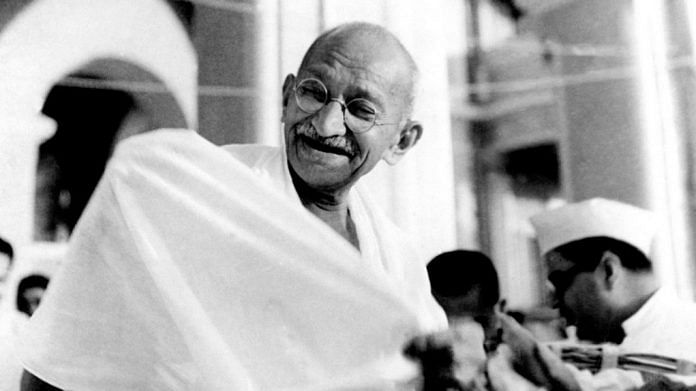
T hat, among languages, Tamil, through its classicism and purity, captured the heart of the Mahatma, who was himself held as a symbol of purity and reverence, was not surprising. The fact that he started learning Tamil when he was 36, and while in South Africa, and continued to be its student even at an advanced age, must make every Tamilian’s heart swell with pride. In the midst of his unrelenting workload, and the innumerable problems that he had to encounter, he did not give up his efforts to learn Tamil—something that reflects the sweetness of this tongue and its ability to enthrall people.
The Tamil language has long fascinated scholars and intellectuals from other parts of the world, such as German-born philologist and Orientalist Friedrich Max Müller (1823–1900), George Uglow Pope (1820–1908), an Anglican Christian missionary and Tamil scholar who spent 40 years in Tamil Nadu and translated many Tamil texts into English, and Constantine Joseph Beschi (1680–1747), an Italian Jesuit priest, also known by his Tamil name of Viramamunivar. It was thus perhaps natural that it should attract the Mahatma. “In the ashram, we might have at times done work without Tamilians, but never without Tamil songs being sung,” Kaka Kalelkar said. Gandhiji’s reverence and love for the Tamil language was considerable.
What were his reasons?
Why had Gandhiji started learning Tamil? There are two views on this. One was that it was his way of showing his gratitude to the Tamils who had worked with him in South Africa. The other was that he wished to study the Tirukkural. Both were true, because Gandhiji has himself said so, and it mattered not which preceded the other.
In the struggle in South Africa, no community made as many sacrifices as the Tamils—making light of their lives, losing all their wordly possessions, consenting to go to jail as to some banquet, and suffering untold tortures. Gandhiji wished to show them his deep gratitude. He believed that learning the mother tongue of the Tamils and conversing with them in their own language was the best way in which he could repay their selfless service. He said:
If not for any other reason, for my peace of mind and to express my undying gratitude, I am learning Tamil. As I keep studying it, I am appreciating its attraction more and more. It is a language of great beauty and sweetness. As I read on, I realise from its structure and content how it has shaped the wisdom and intellectual ability of so many Tamils over the years.
Gandhiji also said that, in later years, when he came to Thoothukudi to address meetings, he had stayed at the Seva Gram of Pandit Natesanar of Madras, and that he had wanted to be introduced to the study of the Tirukkural. Hence, it would be fair to conclude, looking at both these reasons, that Gandhiji had begun to learn Tamil in gratitude to the Tamils, and then, charmed by the language, wished to explore the treasures of the Tirukkural. Mahatma Gandhi, the ‘twentieth-century Valluvar’, being moved by the original Valluvar was quite natural.
Learning the language
Gandhiji started learning Tamil when he was in South Africa. Some Tamil books had been made available to him then. He also made considerable efforts to obtain G. U. Pope’s English translations of Tamil texts and his works in Tamil, and tried to study them. In South Africa, with his time divided between his work as a lawyer and public service, there was hardly any leisure, but that he could still devote some time to the study of Tamil showed his keen desire to learn, and his gratitude to the Tamils. This little time he spent on learning Tamil often came in the way of his writing for the Indian Opinion, despite which he did not discontinue his study. When Gandhiji went to London in 1906 with H. O. Ali, he had learnt the rudiments of Tamil.
In 1908, when he was jailed for the first time, he took some Tamil books with him, and studied them diligently in jail.
At the end of 1913, when he was incarcerated in Bloemfontein prison, he continued to study Tamil after attending to the jail duties given to him. “In Bloemfontein prison, I devote 8 hours to read and write, much of which time I [spend] in studying Tamil,” he had written to his son Manilal Gandhi in a letter.
Tamil teacher required
Gandhiji’s consistent keenness to learn Tamil was indeed remarkable. After he returned to India, he asked Srinivasa Sastri to select and send him a good Tamil teacher, and reminded him of that in his letter dated 16 July 1915. Further, the trouble he took to appoint a Tamil teacher in his ashram was seen in a letter to Maganlal Gandhi, who had come to Madras in 1915 with his wife, specifically to learn Tamil. He wrote: “See whether you could send a Tamil teacher here.
We could pay him the requisite salary. We should have no objection even if he wishes to stay outside the ashram. He must be simple in his habits and behaviour.”
Learning Tamil through mail
In later years, after his return to India, Gandhiji learnt Tamil from V. A. Sundaram and whoever else was near him at any given time. Those who have read this book would have known that it was his usual practice to buy Tamil books on his visits to Madras, or write to close friends like G. A. Natesan to send them. In addition to all this, he learnt Tamil through mail. For this his teacher was Rajagopalachariar.
The following correspondence between them on Tamil words is interesting.
Received your affectionate letter. The Tamil lesson that you had sent was very good. I do not think I will forget the words, ‘anbu’ (love) and ‘ambu’ (arrow). Does not the word ‘ambu’ also have the meaning of lotus? What is the meaning of ‘anbudan’? Is the last syllable ‘n’?
With rombu affection,
Rajaji later corrected the ‘rombu’ as ‘romba’, meaning ‘much’. Gandhiji also felt that, in general, Tamilians were not too attached to their language. He had written about this on 20 October 1917. It was only a few years ago that Madras began to recognise the need for education in the mother tongue. More than the Tamils, the Telugu-speaking people are more keen about this. As the Tamils are fluent in English, they do not care to devote enough attention to make Tamil the language of instruction. In Telugu-speaking areas, education in English has not taken on as much. Hence, in those parts, they use their mother tongue more than the Tamils.
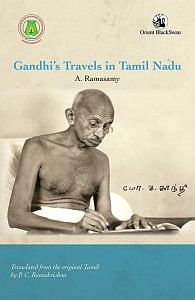
Subscribe to our channels on YouTube , Telegram & WhatsApp
Support Our Journalism
India needs fair, non-hyphenated and questioning journalism, packed with on-ground reporting. ThePrint – with exceptional reporters, columnists and editors – is doing just that.
Sustaining this needs support from wonderful readers like you.
Whether you live in India or overseas, you can take a paid subscription by clicking here .
- South Africa
LEAVE A REPLY Cancel
Save my name, email, and website in this browser for the next time I comment.
Most Popular
Lok sabha elections 2024 phase-4 live: eci records 40.32% voter turnout till 1 pm, centre to launch its own ott platform, to air ‘clean’ content promoting ‘india’s culture, values’, a showdown in kerala congress expected after ls elections. k sudhakaran at the heart of it.
Required fields are marked *
Copyright © 2024 Printline Media Pvt. Ltd. All rights reserved.
- Terms of Use
- Privacy Policy
- Terms of Services
- Privacy Policy

- வேலைவாய்ப்பு
- குழந்தை நலன்
- இயற்கை விவசாயம்
- மாடித்தோட்டம்
- சொட்டு நீர் பாசனம்
- மெஹந்தி டிசைன்
- சமையல் குறிப்பு
மகாத்மா காந்தி பேச்சு போட்டி | Mahatma Gandhi Speech in Tamil
மகாத்மா காந்தி பேச்சு போட்டி கட்டுரை | Mahatma Gandhi Speech in Tamil
Mahatma Gandhi Speech in Tamil : அகிம்சை மூலமாக நாட்டை வென்று நம் நாட்டை மீட்டு கொடுத்த மகாத்மா காந்தியின் உண்மையான பெயர் மோகன்தாசு கரம்சந்த் காந்தி. அக்டோபர் 2 குஜராத் மாநிலத்திலுள்ள போர்பந்தர் எனும் ஊரில் பிறந்தார். மகாத்மா காந்தி மிகப்பெரிய மற்றும் சிறந்த தேசபக்தர். காந்திக்கு மகாத்மா என்னும் கௌரவத்தை வழங்கியவர் இரவீந்திரநாத் தாகூர் ஆவார். இவரது தந்தை பெயர் கரம்சந்த் உத்தம்சந்த் காந்தி; தாயார் பெயர் புத்லிபாய் ஆகும்.
Gandhi Jayanti Speech in Tamil: இவரது மனைவியின் பெயர் கஸ்தூரிபாய் 13-ம் வயதில் மகாத்மா காந்திக்கு திருமணமானது. இவருக்கு மொத்தம் 4 ஆன் பிள்ளைகள். அவர்களது பெயர் ஹரிலால், மணிலால், ராம்தாஸ், தேவதாஸ். தனது பள்ளிப்படிப்பை 18 வயதில் முடித்துவிட்டு 19-ம் வயதில் பாரிஸ்டர் (Barrister) எனப்படும் வழக்கரிஞர் படிப்பிற்காக காந்தி இங்கிலாந்து சென்றார். பின் அவர் பம்பாயில் சிறிது காலம் வழக்கறிகராக பணியாற்றினார்.

Mahatma Gandhi Speech in Tamil – காந்தியின் அரப்போராட்டங்கள்:
- பம்பாயில் பணிபுரிந்த காந்தியின் வழக்கறிஞர் வேலை சரியாக அமையாததால் 1893 -ம் ஆண்டு தென்னாப்பிரிக்காவில் பணிபுரிய சென்றார். தென்னாப்பிரிக்காவில் இன்பாகுபாடும் நிறவெறியும் அதிகமாக இருந்தது.
- தென்னாபிரிக்க நீதிமன்றத்தில் காந்தி வழக்கறிஞராக வாதாடும்போது கறுப்பின மக்கள் மற்றும் இந்தியர்கள் தலைப்பாகை அணியக்கூடாது என்ற சட்டம் அங்கு இருந்தது. மேலும் ரயில்களில் பயணம் செய்யும் பொழுது கறுப்பின மக்கள் மற்றும் இந்தியர்கள் முதல் வகுப்பில் பயணம் செய்ய கூடாது என்ற சட்டமும் இருந்தது. இவையெல்லாம் தான் காந்தி ஒரு விடுதலை போராட்ட வீரராக உருவாக காரணமாக இருந்தது.
- தென்னாப்பிரிக்காவில் நடக்கும் கொடுமைகளை கருத்தில் கொண்டு ஒடுக்கப்பட்ட மக்களின் உரிமைகளை மீட்டு தருவதற்காக 1894- ம் ஆண்டு உருவானதே இந்த இந்திய காங்கிரஸ் கட்சி.
- இந்திய தேசிய காங்கிரசில் 1921- ம் ஆண்டு காங்கிரஸ் தலைவராக தேர்ந்தெடுக்கப்பட்டார். இந்த கட்சியின் மூலம் மக்களிடையே விடுதலை உணர்வை ஊட்டி ஆங்கிலேயரின் ஆட்சிக்கு பாடம் புகட்டினார். இந்தியாவில் இருந்துகொண்டே தனது போராட்டங்கள் மூலம் இங்கிலாந்து நாடாளுமன்றத்தை திணறடித்த பெருமைக்கு உரியவர் மகாத்மா காந்தி அவர்கள்.
Gandhi Jayanti Speech in Tamil – ஒத்துழையாமை இயக்கம்:
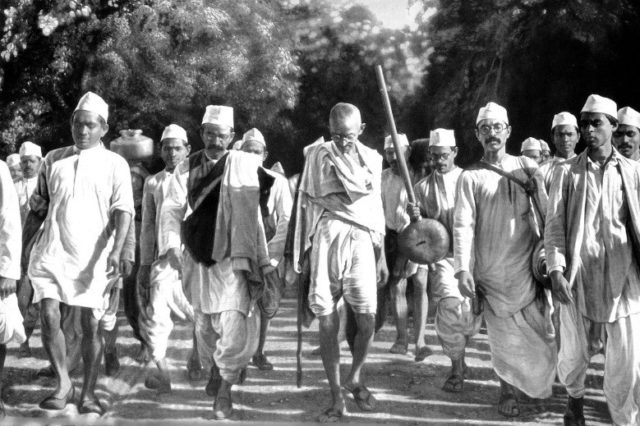
- காந்திஜியின் அரவழிப் போராட்டங்களில் முக்கியமான போராட்டம் ஒத்துழையாமை இயக்கம். இந்த இயக்கத்தின் முக்கிய நோக்கமே இங்கிலாந்தில் சொல்லப்படும் எந்த ஒரு கூற்றுக்கும் செவிசாய்க்க கூடாது என்பதே ஆகும்.
- பிரிட்டிஷ் அரசில் விற்கப்படும் பொருட்கள் எதையும் வாங்க கூடாது, உபயோகப்படுத்தக்கூடாது, நீதிமன்றத்திற்கு எந்த வழக்கறிஞரும் செல்ல கூடாது என்பதே இந்த ஒத்துழையாமை இயக்கம் ஆகும்.
- அதனால் இந்திய வாடிக்கையாளர்களை நம்பி இருந்த அந்த நாடு பொருளாதார வளர்ச்சியில் பெரும் வீழ்ச்சியை சந்தித்தது. காந்திஜியின் புத்திசாலித்தனத்தை கண்டு பிரிட்டிஷ் அரசாங்கம் ஆச்சரியத்திற்கு உள்ளானது.
மகாத்மா காந்தி பேச்சு போட்டி- உப்பு சத்தியாகிரகம்:
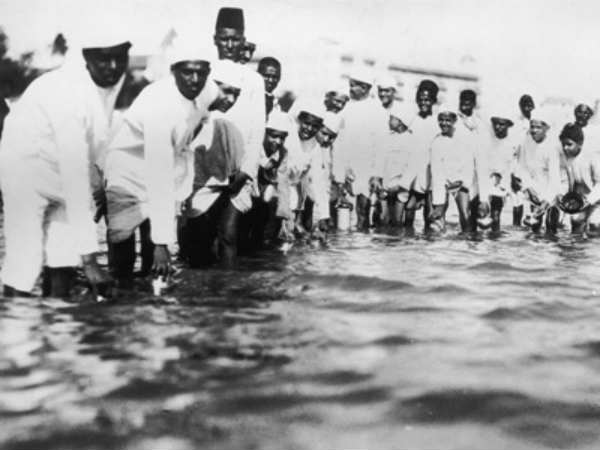
- மகாத்மாவின் அடுத்த முக்கியமான போராட்டம் தண்டியாத்திரை. இந்த போராட்டத்தின் முக்கிய காரணம் பிரிட்டிஷ் அரசாங்கம் இந்தியாவில் உப்புக்கு வரி விதித்தது. அதை தடுப்பதற்காக கொண்டு வரப்பட்டது தான் உப்பு சத்தியாகிரகம் ஆகும்.
- 1930-ம் ஆண்டு மார்ச் 2-ம் தேதி அகமதாபாத்திலிருந்து 240 மைல் தூரத்திலுள்ள தண்டிக்கு மக்கள் ஆதரவுடன் 23 நாள் நடைப்பயணம் மேற்கொண்டு அங்குள்ள கடல் நீரில் உப்பு காய்ச்சி அங்குள்ள மக்கள் அனைவருக்கும் உப்பை விநியோகம் செய்தார்.
- இதனால் அங்குள்ள அனைத்து மக்கள் மற்றும் காந்திஜி சிறையில் அடைக்கப்பட்டனர். காந்திஜியின் இந்த அறப்போராட்டத்திற்கு பிறகே பிரிட்டிஷ் அரசு உப்பிற்கு விதிக்கப்பட்ட வரியை திரும்ப பெற்றது.
Mahatma Gandhi Speech in Tamil – வெள்ளையனே வெளியேறு இயக்கம்:
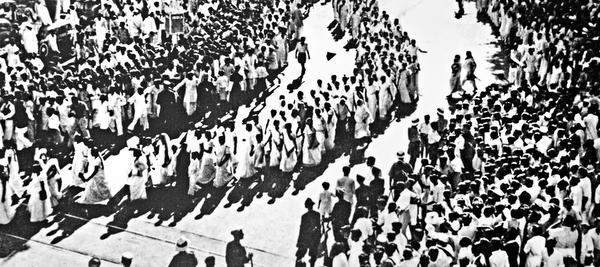
- 1942 -ம் ஆண்டு ஆங்கிலேய அரசின் ஆதிக்கத்தை எதிர்த்து “ஆகஸ்ட் புரட்சி” என்ற பெயரில் வெள்ளையனே வெளியேறு இயக்கம் தொடங்கப்பட்டது. இந்த புரட்சியில் காந்தி அவர்கள் இந்தியர்களிடம் இந்நாட்டை கொடுத்துவிட்டு அந்நியர்கள் வெளியேற வேண்டும் என்று எந்த ஒரு வன்முறையிலும் ஈடுபடாமல் 1947-ம் ஆண்டு ஆகஸ்ட் 15 சுதந்திரத்தை பெற்று பிரிட்டிஷ் அரசாங்கத்தை இந்த நாட்டை விட்டு வெளியேற செய்தார்.
- இந்தியா விடுதலை அடைந்த பிறகு முகமது அலி ஜின்னா என்பவரின் தலைமையில் முஸ்லீம்களுக்கு தனி நாடு கோரப்பட்டது. அதன் விளைவாகவே பாகிஸ்தான் தனி நாடாக பிரிந்தது. அரும்பாடு பட்டு வாங்கி கொடுத்த சுதந்திரத்தில் பாகிஸ்தான் பிரச்சனை மட்டும் இன்னும் முடிவுக்கு வரவில்லை.
Gandhi Jayanti Speech in Tamil – காந்தி மறைவு – மகாத்மா காந்தி:
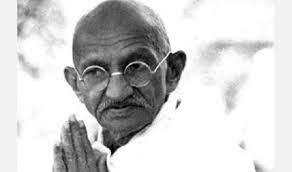
- 1948 -ஆம் ஆண்டு ஜனவரி 30- ஆம் நாள் தில்லியில் வைத்து நாதுராம் கோட்சே என்பவரால் சுட்டு கொல்லப்பட்டார். அறவழியில் போராட கற்றுக்கொடுத்த காந்தி அவர்களின் உயிர் ஒரு துப்பாக்கி குண்டால் பறிபோனது. எவ்வளவு வீரர்கள் இந்த நாட்டில் வாழ்ந்து மறைந்தாலும் மக்கள் மத்தியில் அதிகம் பேசப்படும் ஒரு தலைவர் காந்திஜி அவர்களே ஆவர்.
- இவர் மறைந்த நாளான ஜனவரி 30 அன்று தியாகிகள் தினமாக கொண்டாடப்படுகிறது.
- அவர்களது இந்த தியாகத்தை போற்றும் விதமாக தான் இவரது பிறந்தநாள் அக்டோபர்-2 காந்தி ஜெயந்தி எனும் பெயரில் இந்தியாவில் கொண்டாடப்படுகிறது. நம் வாழ்க்கைக்கு பயன்படும் ரூபாய் நோட்டுகளில் இன்றும் புன்னகைத்துக் கொண்டிருக்கிறார் நம் தேச தந்தை மகாத்மா காந்தி அவர்கள். இவரது இந்த கொள்கை இன்று உள்ள இளைஞர்களுக்கு மட்டும் அல்ல வருங்கால சந்ததிகளுக்கும் பயன்படும்.
Related Posts
- இவரை தான் தாசில்தார் என்று சொல்கிறோமா..? | Tahsildar in Tamil
சால்மன் மீனில் இவ்வளவு விஷயம் இருக்கா..! | Salmon Fish in Tamil
இன்றைய இறைச்சி விலை | சிக்கன் ரேட் டுடே, (15.05.2024) தங்கம் விலை இன்று மதுரை | indraya thangam vilai madurai.
ஊடகத்துறைக்கு இளையவள். Pothunalam.com இல் ஜூனியர் Content Writer ஆக பணியாற்றுகிறேன். எனக்கு வங்கி சார்ந்த பயனுள்ள தகவல்கள் மற்றும் வேலைவாய்ப்பு சார்ந்த செய்திகளை உங்களுக்காக எழுதுகிறேன். நன்றி!.
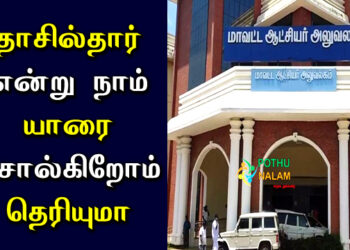
Tahsildar in Tamil வாசகர்களுக்கு வணக்கம்..! இன்றைய பதிவின் வாயிலாக நாம் தாசில்தார் என்றால் என்ன..? நாம் யாரை தாசில்தார் என்று சொல்கிறோம் என்பதை பற்றி தான்...

Salmon Fish in Tamil மனிதனாக பிறந்த அனைவருமே இருக்கின்ற இடம் முதல் சாப்பிடுகின்ற உணவு வரை அனைத்தையுமே பார்த்து பார்த்து பண்ணுவோம். நாம் உடுத்து உடையாக...
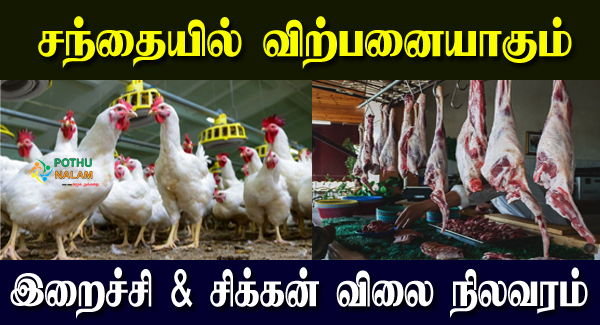
கோழி கறி விலை இன்று | Chicken Indraya Vilai வணக்கம் நண்பர்களே சைவ உணவை விட அசைவ உணவுகளை விரும்பி சாப்பிடுபவர்களே உலகில் அதிகம். அதிலும்...
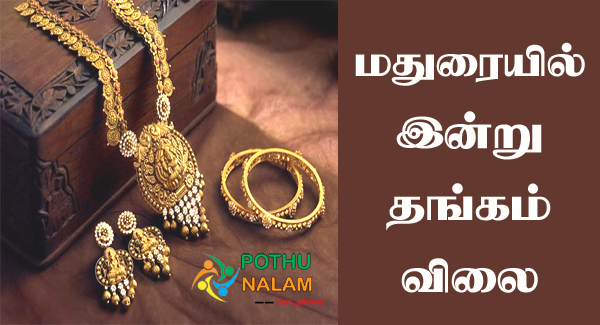
இன்றைய தங்கம் விலை மதுரை | Madurai Thangam Vilai Madurai Thangam Vilai:- பொதுவாக தங்கம் விலை பொறுத்தவரை ஒவ்வொரு நாளும் நேற்றைய நாளை விட...
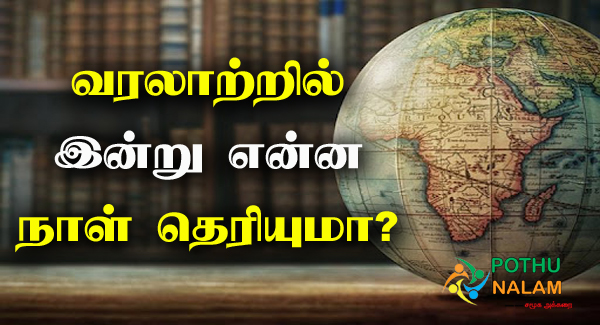
வரலாற்றில் இன்று என்ன நாள் தெரியுமா? | Today History in Tamil
வரலாற்றில் இன்று மே 15 Today History in Tamil:- வரலாறு என்பது இறந்த காலத்தில் நிகழ்ந்த விஷயத்தை பற்றி நாம் தெரிந்து கொள்ளும் ஒன்றாகும். குறிப்பாக...
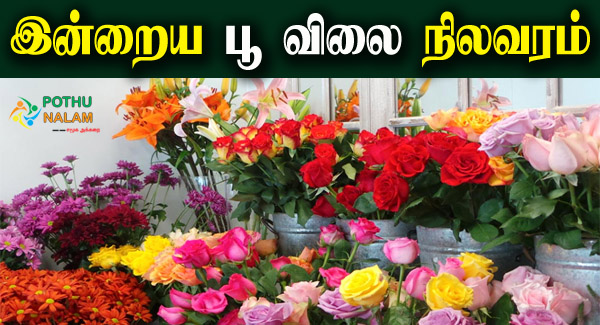
இன்றைய பூ விலை நிலவரம் | Today Flower Rate in Chennai
இன்றைய பூ மார்க்கெட் விலை நிலவரம் | Poo Market Vilai Nilavaram Pookal Vilai Nilavaram Chennai: மலர்கள் என்றாலே அனைவருக்கும் மிகவும் பிடித்த ஒன்று....
Leave a Reply Cancel reply
Your email address will not be published. Required fields are marked *
Save my name, email, and website in this browser for the next time I comment.
Recent Post
- முகத்தில் அதிக வியர்வை வர காரணம் என்ன ? தடுக்கும் சில வழிகள்
- உங்கள் நட்சத்திரத்திற்கு நீங்கள் என்ன தானம் செய்ய வேண்டும் தெரியுமா..?
- 10 ஆம் வகுப்பு படித்த பிறகு என்ன படிக்கலாம்..?
- போலி நண்பர்களை கண்டுபிடிப்பது எப்படி.?
- பிரயாசை என்பதன் தமிழ் அர்த்தம் இதுதான்..!
- ஆவாரம் பூவில் இவ்வளவு தீமைகள் உள்ளதா..? இவ்ளோ நாள் இது தெரியலையே..!
- தமிழ்நாடு 12th Supplementary தேர்வு தேதி 2024
- தினமும் 5000 ரூபாய் வரை வருமானம் தரக்கூடிய தொழில் இதுதாங்க.! ரோட்டோரத்தில் போட்டிங்கனா வருமானம் அள்ளும்..!
- வாதம் அதிகமானால் அறிகுறிகள்
- வடகிழக்கு இந்தியாவின் நீண்ட நதி எது.?
- Central University Of Tamil Nadu – Courses, Fees, Admission 2024

Connect On Social Media
© 2024 Pothunalam.com - Pothunalam.com Owned by Weby Adroit Infotech LLP | About Us | Contact: [email protected] | Thiruvarur District -614404
Welcome Back!
Login to your account below
Remember Me
Retrieve your password
Please enter your username or email address to reset your password.
Essay on Mahatma Gandhi – Contributions and Legacy of Mahatma Gandhi
500+ words essay on mahatma gandhi.
Essay on Mahatma Gandhi – Mahatma Gandhi was a great patriotic Indian, if not the greatest. He was a man of an unbelievably great personality. He certainly does not need anyone like me praising him. Furthermore, his efforts for Indian independence are unparalleled. Most noteworthy, there would have been a significant delay in independence without him. Consequently, the British because of his pressure left India in 1947. In this essay on Mahatma Gandhi, we will see his contribution and legacy.

Contributions of Mahatma Gandhi
First of all, Mahatma Gandhi was a notable public figure. His role in social and political reform was instrumental. Above all, he rid the society of these social evils. Hence, many oppressed people felt great relief because of his efforts. Gandhi became a famous international figure because of these efforts. Furthermore, he became the topic of discussion in many international media outlets.
Mahatma Gandhi made significant contributions to environmental sustainability. Most noteworthy, he said that each person should consume according to his needs. The main question that he raised was “How much should a person consume?”. Gandhi certainly put forward this question.
Furthermore, this model of sustainability by Gandhi holds huge relevance in current India. This is because currently, India has a very high population . There has been the promotion of renewable energy and small-scale irrigation systems. This was due to Gandhiji’s campaigns against excessive industrial development.
Mahatma Gandhi’s philosophy of non-violence is probably his most important contribution. This philosophy of non-violence is known as Ahimsa. Most noteworthy, Gandhiji’s aim was to seek independence without violence. He decided to quit the Non-cooperation movement after the Chauri-Chaura incident . This was due to the violence at the Chauri Chaura incident. Consequently, many became upset at this decision. However, Gandhi was relentless in his philosophy of Ahimsa.
Secularism is yet another contribution of Gandhi. His belief was that no religion should have a monopoly on the truth. Mahatma Gandhi certainly encouraged friendship between different religions.
Get the huge list of more than 500 Essay Topics and Ideas
Legacy of Mahatma Gandhi
Mahatma Gandhi has influenced many international leaders around the world. His struggle certainly became an inspiration for leaders. Such leaders are Martin Luther King Jr., James Beve, and James Lawson. Furthermore, Gandhi influenced Nelson Mandela for his freedom struggle. Also, Lanza del Vasto came to India to live with Gandhi.

The awards given to Mahatma Gandhi are too many to discuss. Probably only a few nations remain which have not awarded Mahatma Gandhi.
In conclusion, Mahatma Gandhi was one of the greatest political icons ever. Most noteworthy, Indians revere by describing him as the “father of the nation”. His name will certainly remain immortal for all generations.
Essay Topics on Famous Leaders
- Mahatma Gandhi
- APJ Abdul Kalam
- Jawaharlal Nehru
- Swami Vivekananda
- Mother Teresa
- Rabindranath Tagore
- Sardar Vallabhbhai Patel
- Subhash Chandra Bose
- Abraham Lincoln
- Martin Luther King
FAQs on Mahatma Gandhi
Q.1 Why Mahatma Gandhi decided to stop Non-cooperation movement?
A.1 Mahatma Gandhi decided to stop the Non-cooperation movement. This was due to the infamous Chauri-Chaura incident. There was significant violence at this incident. Furthermore, Gandhiji was strictly against any kind of violence.
Q.2 Name any two leaders influenced by Mahatma Gandhi?
A.2 Two leaders influenced by Mahatma Gandhi are Martin Luther King Jr and Nelson Mandela.
Customize your course in 30 seconds
Which class are you in.

- Travelling Essay
- Picnic Essay
- Our Country Essay
- My Parents Essay
- Essay on Favourite Personality
- Essay on Memorable Day of My Life
- Essay on Knowledge is Power
- Essay on Gurpurab
- Essay on My Favourite Season
- Essay on Types of Sports
Leave a Reply Cancel reply
Your email address will not be published. Required fields are marked *
Download the App

Talk to our experts
1800-120-456-456
- Mahatma Gandhi Essay

Important Essay on Mahatma Gandhi for Students in English
Mohandas Karamchand Gandhi, often called the 'Father of the Nation' , was a leader who fought for India's freedom from British rule. He believed in non-violence. Every year on October 2nd, Mahatma Gandhi's birthday is celebrated as Gandhi Jayanti to honor his efforts in freeing India.
English Essay on Mahatma Gandhi
Rabindranath Tagore was the first to call Gandhiji 'Mahatma,' which means 'Great Soul' in Sanskrit. His wise ideas and beliefs led people to respect and call him 'Mahatma Gandhi.' His dedication to the country and efforts to turn his ideas into reality make Indians around the world very proud of him .
According to Mahatma Gandhi’s biography, he was born on October 2, 1869 , in Porbandar, a coastal town in the present-day Indian state of Gujarat. He grew up in a Hindu family and ate basic vegetarian meals. His dad, Karamchand Uttamchand Gandhi, was an important leader in Porbandar State. In South Africa, he was the first to lead a peaceful protest movement, setting him apart from other demonstrators. Mahatma Gandhi also introduced the idea of Satyagraha, a nonviolent approach to opposing unfairness. He devoted 20 years of his life to battling discrimination in South Africa.
His idea of 'Ahimsa,' which means not hurting anyone, was widely admired and followed by many influential people worldwide. He became an indomitable figure who couldn't be defeated in any situation. Mahatma Gandhi initiated the 'Khadi Movement' to encourage the use of fabrics like khadi or jute. This movement was a crucial part of the larger 'Non-co-operation Movement,' which advocated for Indian goods and discouraged foreign ones. Gandhi strongly supported agriculture and encouraged people to engage in farming. He inspired Indians to embrace manual labor and emphasized self-reliance, urging them to provide for their needs and lead simple lives. He began weaving cotton clothes using the Charkha to reduce dependence on foreign goods and promote Swadeshi products among Indians.
During the fight for India's freedom, Gandhiji faced imprisonment several times along with his followers, but his main goal was always the freedom of his motherland. Even when he was in prison, he never chose the path of violence.
Mahatma Gandhi made significant contributions to various social issues. His efforts against 'untouchability' while he was in Yerwada Jail, where he went on a hunger strike against this ancient social evil, greatly helped uplift the oppressed community in modern times. He also emphasized the importance of education, cleanliness, health, and equality in society.
These qualities defined him as a person with a great soul and justified his transformation from Gandhi to Mahatma. He led many freedom movements, including the "Quit India Movement," which was highly successful. His death was a huge loss to the forces of peace and democracy, leaving a significant void in the nation's life.
Gopal Krishna Gokhale, a prominent Indian nationalist leader, significantly influenced Mahatma Gandhi's political ideology and leadership approach. Gandhi considered him his political teacher.
Mahatma Gandhi played a crucial role in India's fight for freedom from British rule. His life was dedicated to serving his country and its people, and he became an international symbol of Indian leadership. Even today, he continues to inspire and motivate young people worldwide with his values and principles.
Gandhi Ji was known for his strong sense of discipline. He emphasized the importance of self-discipline in achieving significant goals, a principle he applied in promoting his philosophy of Ahimsa (non-violence). Through his own life, he demonstrated that rigorous discipline can lead to the realization of any objective, provided we remain committed and dedicated. These qualities established him as a revered and respected leader whose influence extends far beyond his lifetime. His ideals continue to resonate not only in India but also around the world.

FAQs on Mahatma Gandhi Essay
1. What were the different movements that Gandhi started in order to bring Independence to India?
In order to bring freedom, Gandhi started the Satyagraha movement in 1919, the non-cooperation movement in 1921, and Civil Disobedience movement in 1930 and Quit India movement in 1942.
2. Who killed Mahatma Gandhi?
A young man named Nathuram Godse killed Mahatma Gandhi when he was going to attend an evening prayer meeting.
3. Why is Gandhi known as the ‘Father of the Nation’?
Mahatma Gandhi is known as the ‘Father of the Nation’ because he laid the true foundation of independent India with his noble ideals and supreme sacrifice.
4. How do we commemorate Mahatma Gandhi’s contribution for our Nation?
His birthday on 2 nd October is celebrated as a National Holiday across the nation in order to commemorate his great contributions and sacrifices for the country’s independence.
5. What are the things we should learn from Mahatma Gandhi?
There are various things one can learn from Gandhiji. The principles that he followed and preached his entire generation and for generations to come are commendable. He believed in ‘Ahimsa’ and taught people how any war in the world can be won through non-violence. To simply state one can learn the following principles from Gandhiji -
Nonviolence,
Respect for elders,

IMAGES
VIDEO
COMMENTS
i love gandhiji. he is one of the best man in india. ... In this composition i know about mahatma Gandhi in Tamil and thank you very much for adding the same and hats of to you guys thank you. lakshitha says: September 26, 2014 at 1:20 pm. i like the first passage in this Tamil composition. sanoojan says: October 7, 2014 at 8:10 pm.
மகாத்மா காந்தி வாழ்க்கை வரலாறு. Mahatma Gandhi history in Tamil, Mahatma Gandhi biography in Tamil, Mahatma Gandhi varalaru, essay, katturai in Tamil.
Mahatma Gandhi History In Tamil: மகாத்மா காந்தி ஒரு இந்திய அரசியல் தலைவர் மற்றும் ...
மோகன்தாசு கரம்சந்த் காந்தி ( ஆங்கிலம்: Mohandas Karamchand Gandhi, குசராத்தி: મોહનદાસ કરમચંદ ગાંધી, அக்டோபர் 2, 1869 - ஜனவரி 30, 1948) என்பவர் ஒரு இந்திய ...
Mahatma Gandhi Katturai In Tamil Tamil Tips கட்டுரைகள் இந்த பதிவில் "மகாத்மா காந்தி பற்றிய கட்டுரை" (Mahatma Gandhi Katturai In Tamil) காணலாம்.
Mahatma Gandhi Katturai In Tamil; மகாத்மா காந்தி; மகாத்மா காந்தி கட்டுரை; மகாத்மா காந்தி பற்றிய கட்டுரை
மகாத்மா காந்தி பற்றிய கட்டுரை தமிழ் | Gandhi Adigal Patri Katturai in Tamil Advertisement வணக்கம் நண்பர்களே.! இன்றைய பதிவில் மகாத்மா காந்தியை பற்றி கட்டுரை காண்போம். மகாத்மா காந்தி ...
மகாத்மா காந்தியின் பிறந்தநாள் அக்டோபர் 02 அன்று, காந்தி ...
Download as PDF. Mahatma Gandhi History in Tamil (மகாத்மா காந்தி வரலாறு தமிழில்): மகாத்மா காந்தி, ஒரு உலக விளக்கம் அளித்த வரலாற்றுச் சாதனைகள் உடையவர். அவரின் ...
வரலாற்றில் இன்று மே 08 Today History in Tamil:- வரலாறு என்பது இறந்த காலத்தில் நிகழ்ந்த விஷயத்தை பற்றி நாம் தெரிந்து கொள்ளும் ஒன்றாகும்.
Gandhi Speech in Tamil 10 Lines Advertisement நாட்டு விடுதலைக்காக அரும்பாடுபட்ட சுதந்திர ...
Here is the essay on Mahatma Gandhi in 500 words in Tamil. Read all about the school life of Mahatma Gandhi and lines about Mohan Das Karamchand Gandhi to write speech in school. Story first published: Monday, September 25, 2023, 12:43 [IST] Other articles published on Sep 25, 2023
Mahatma Gandhi Speech in Tamil 10 Lines (தமிழில் மகாத்மா காந்தி பேச்சு 10 வரிகள்) மகாத்மா காந்தியைப் பற்றி தமிழில் 10 வரிகள் கொண்ட உரை இங்கே: பெண்களே மற்றும் ...
Gandhiji's assassination shook the Tamil art and music world. Madurai Mani Iyer, the khadi-clad super star, took the help of Chitti Sundar Rajan to sing an elegy depicting Gandhiji as an avatar ...
Mahathma Gandhi taught the higlhy popular principle Ahimsa to the world to conquor anything.
The essays in this anthology have been classified into six sections: argumentative essays, expository essays, slices from Gandhi's life, reviews of movies on Gandhi, reminiscences about Gandhi and tributes. The essays are representative of the various schools of thought in Tamil Nadu, some of which I am seeking to underline in this introduction.
Tamil teacher required. Gandhiji's consistent keenness to learn Tamil was indeed remarkable. After he returned to India, he asked Srinivasa Sastri to select and send him a good Tamil teacher, and reminded him of that in his letter dated 16 July 1915. Further, the trouble he took to appoint a Tamil teacher in his ashram was seen in a letter to ...
The Non-cooperation movement gained momentum in Tamil Nadu under the dynamic leadership of C. Rajagopalachari. Gandhiji launched the Non-Co- operation movement on 1st August 1920 and it was a ...
Gandhi Jayanti Speech in Tamil | Prize Winning Performance |காந்தி ஜெயந்தி பேச்சுப் போட்டி | கட்டுரை #abisguide # ...
Mahatma Gandhi Speech in Tamil: அகிம்சை மூலமாக நாட்டை வென்று நம் நாட்டை மீட்டு கொடுத்த மகாத்மா காந்தியின் உண்மையான பெயர் மோகன்தாசு கரம்சந்த் ...
500+ Words Essay on Mahatma Gandhi. Essay on Mahatma Gandhi - Mahatma Gandhi was a great patriotic Indian, if not the greatest. He was a man of an unbelievably great personality. He certainly does not need anyone like me praising him. Furthermore, his efforts for Indian independence are unparalleled. Most noteworthy, there would have been a ...
Mohandas Karamchand Gandhi, often called the 'Father of the Nation', was a leader who fought for India's freedom from British rule.He believed in non-violence. Every year on October 2nd, Mahatma Gandhi's birthday is celebrated as Gandhi Jayanti to honor his efforts in freeing India.. English Essay on Mahatma Gandhi. Rabindranath Tagore was the first to call Gandhiji 'Mahatma,' which means ...